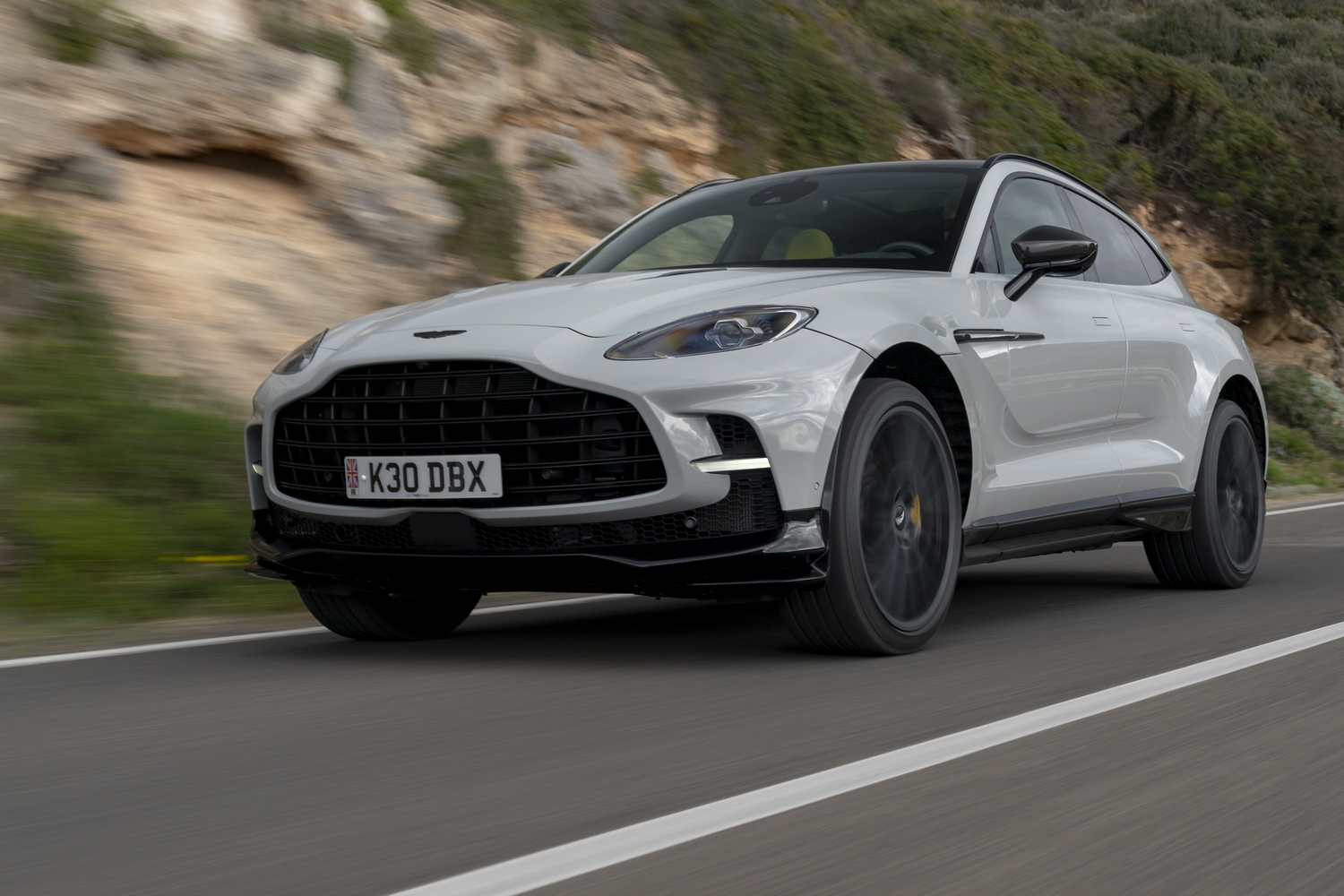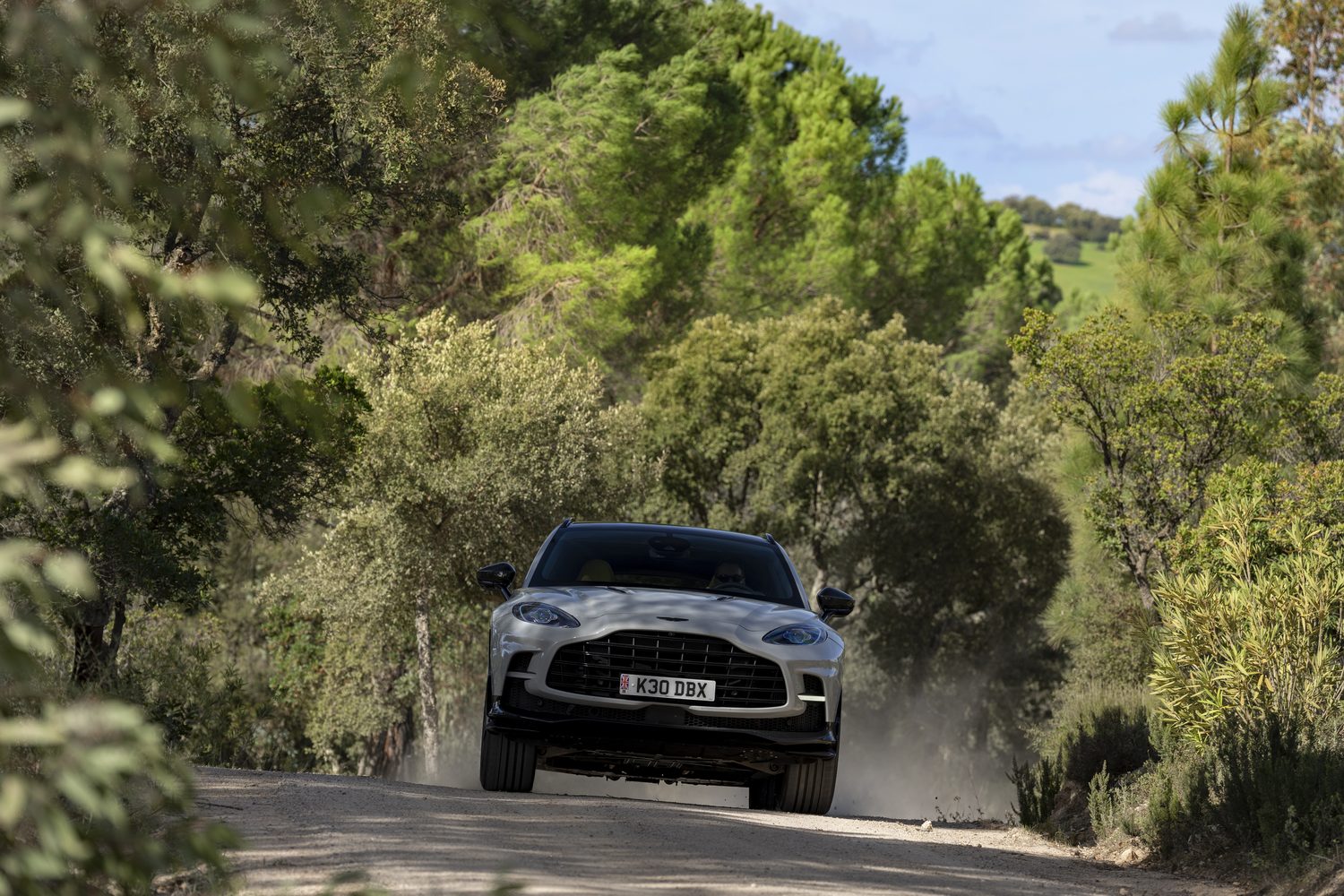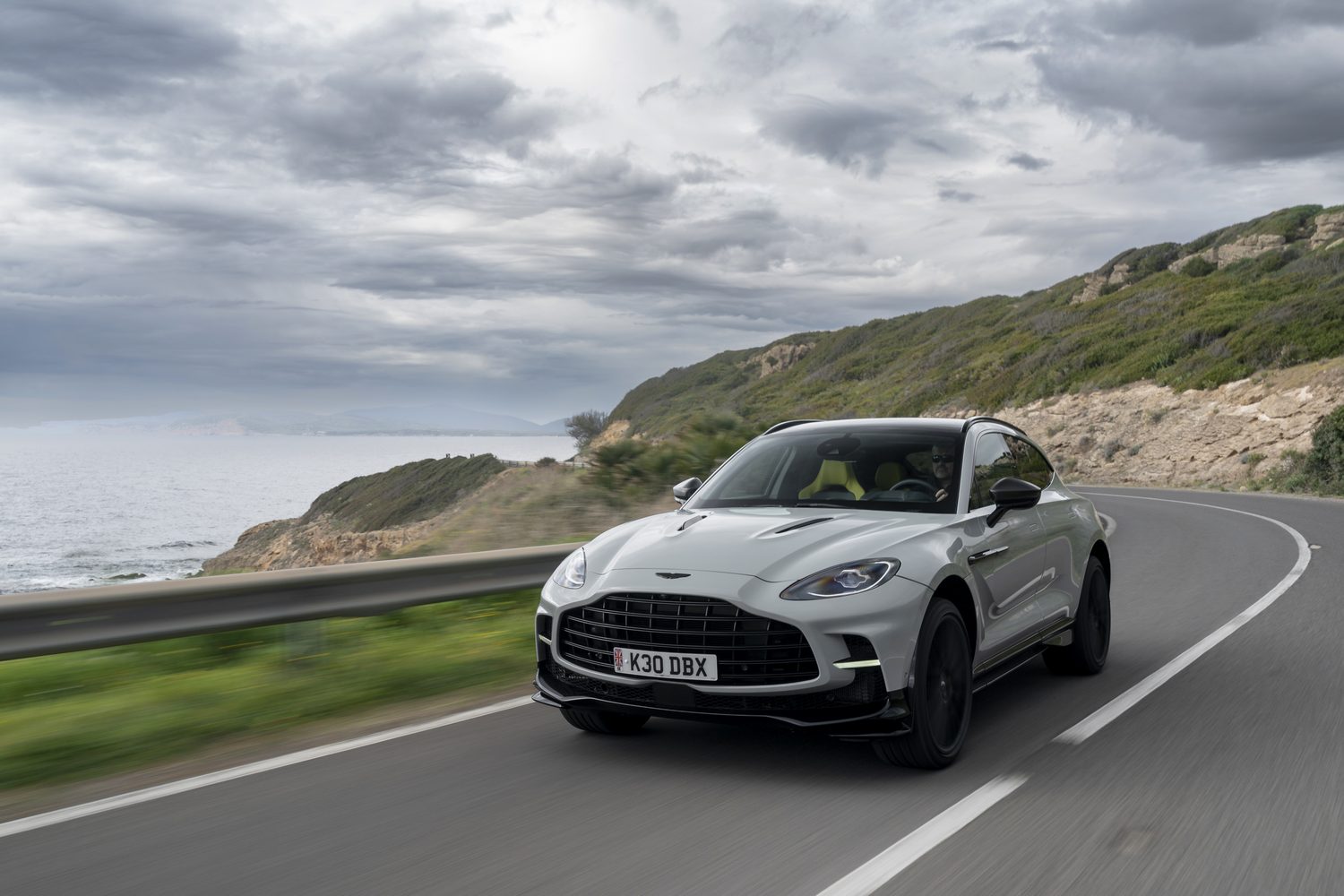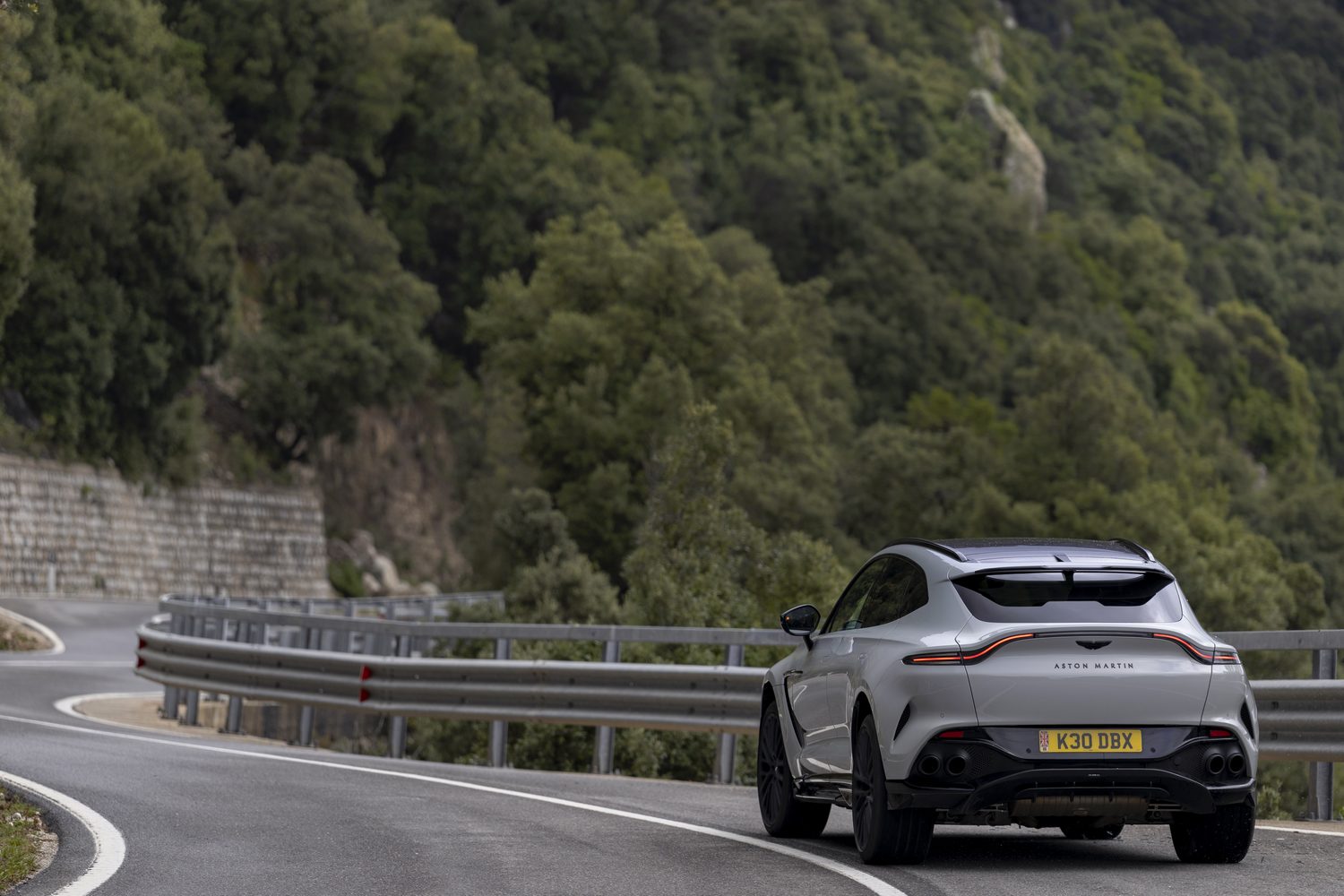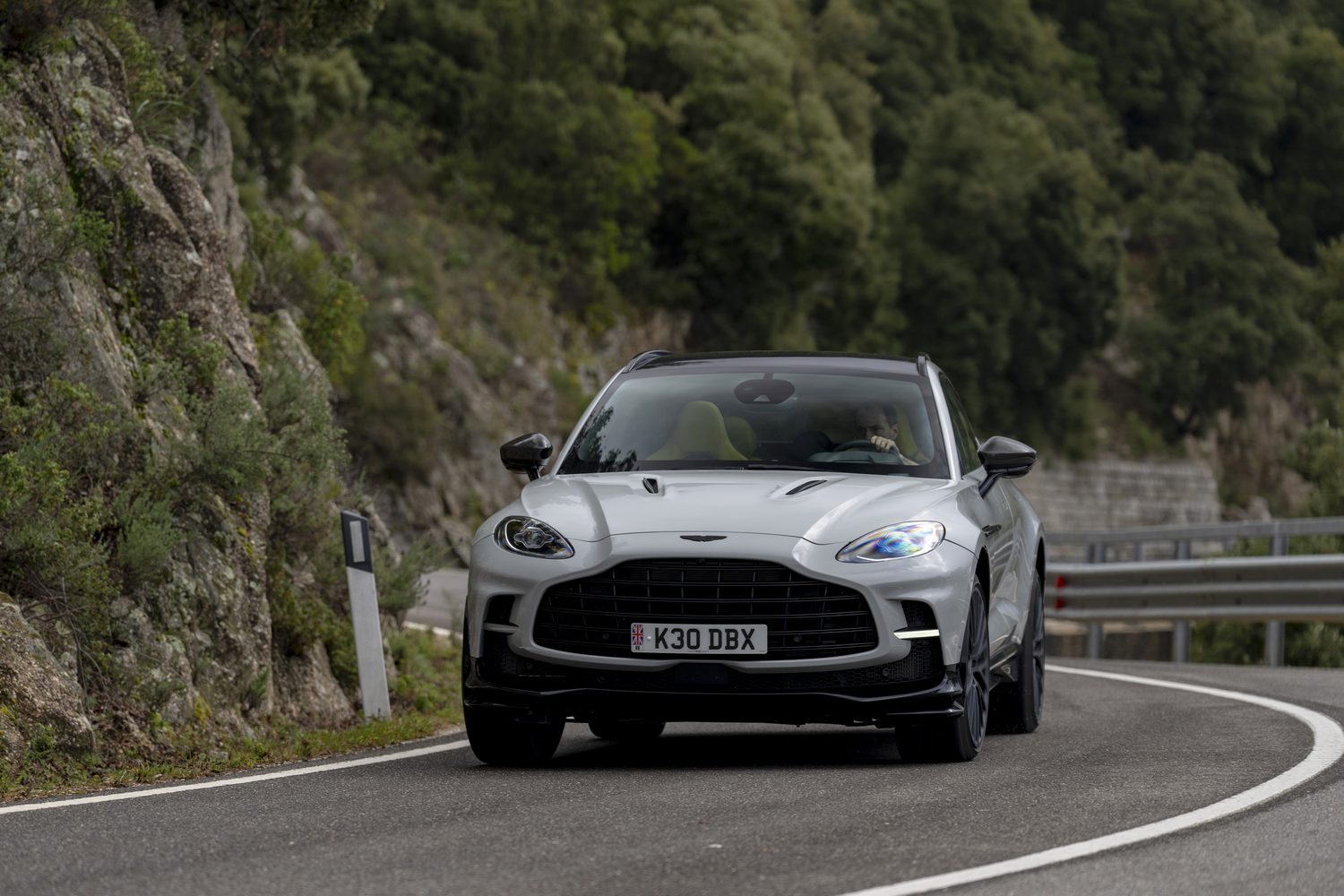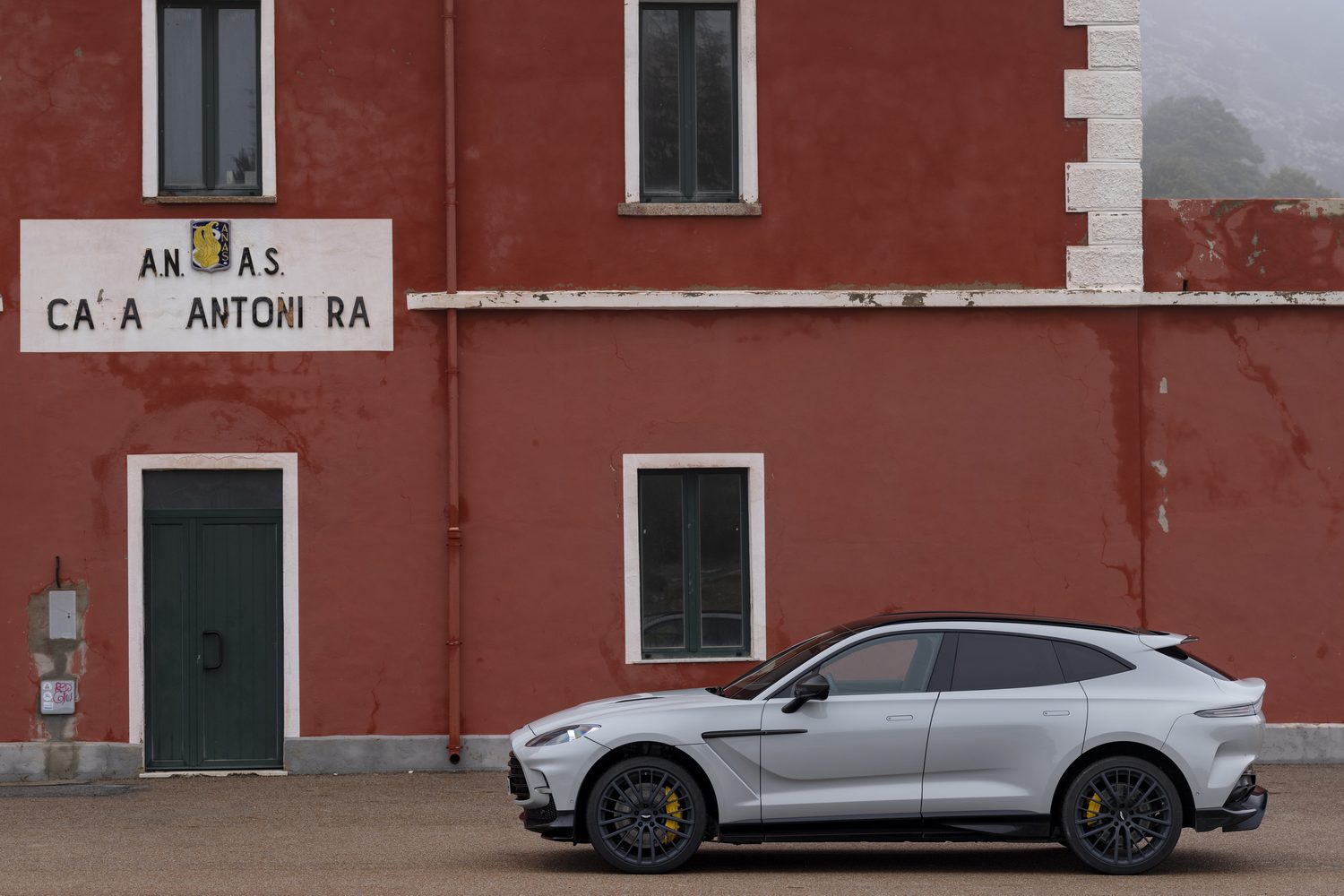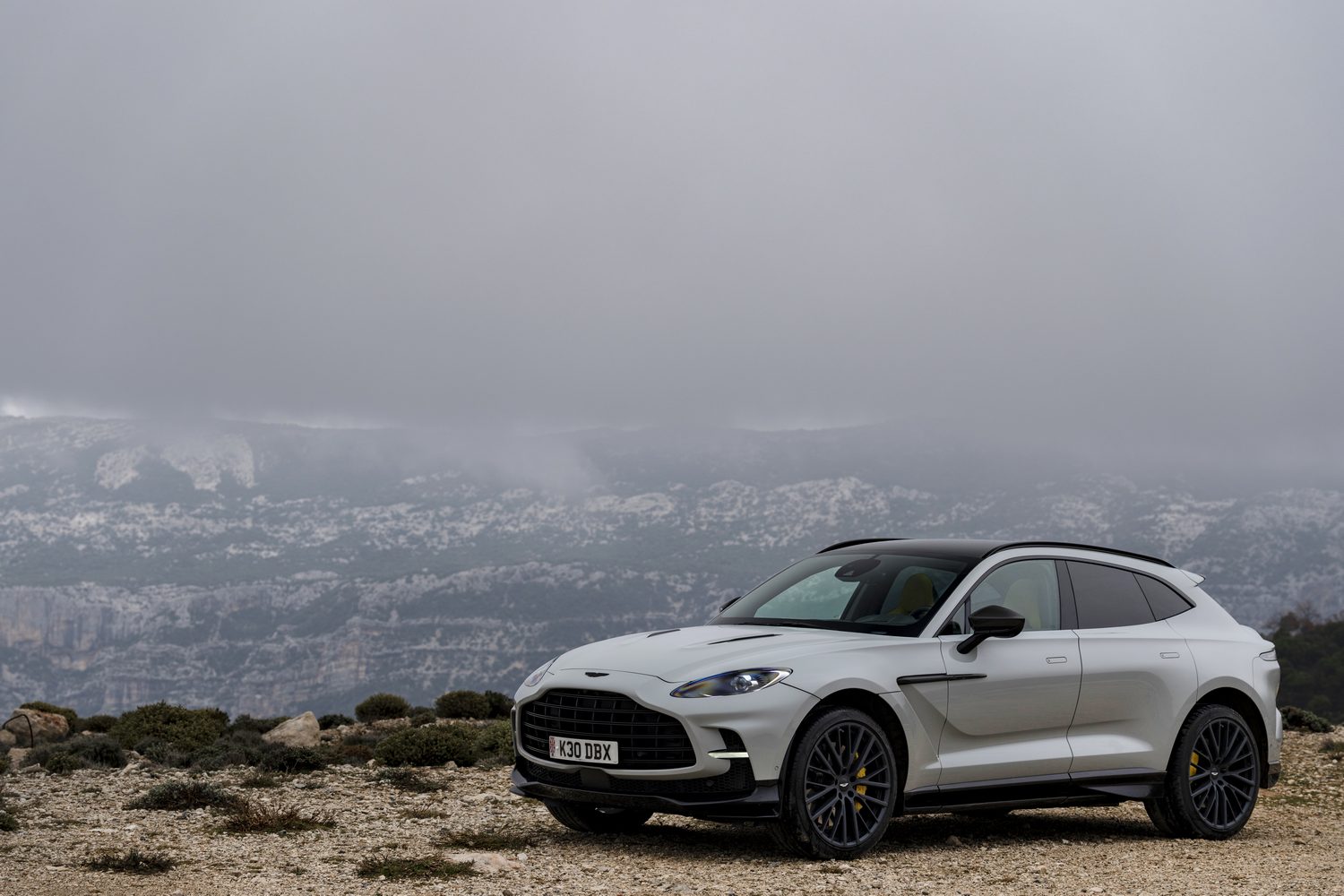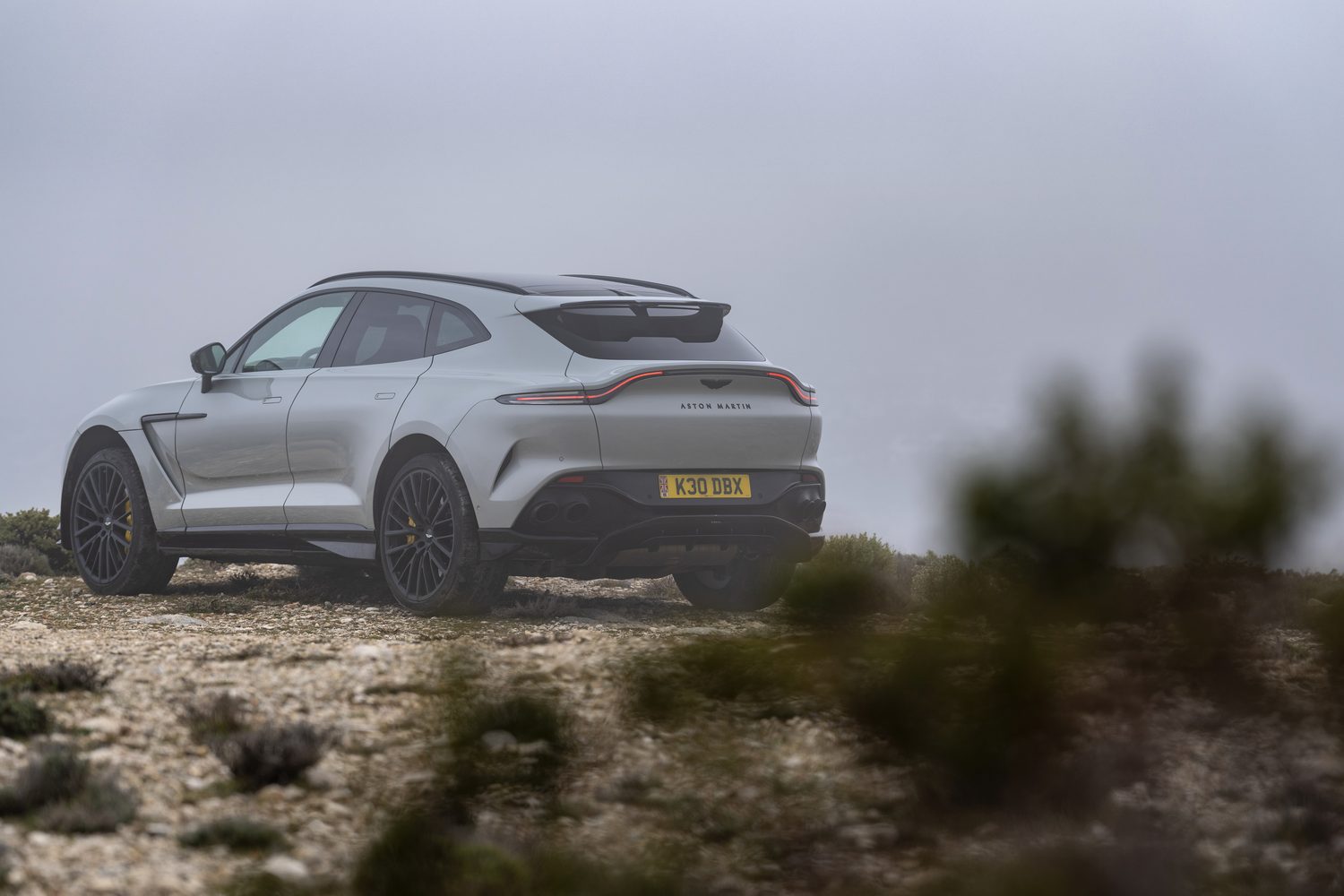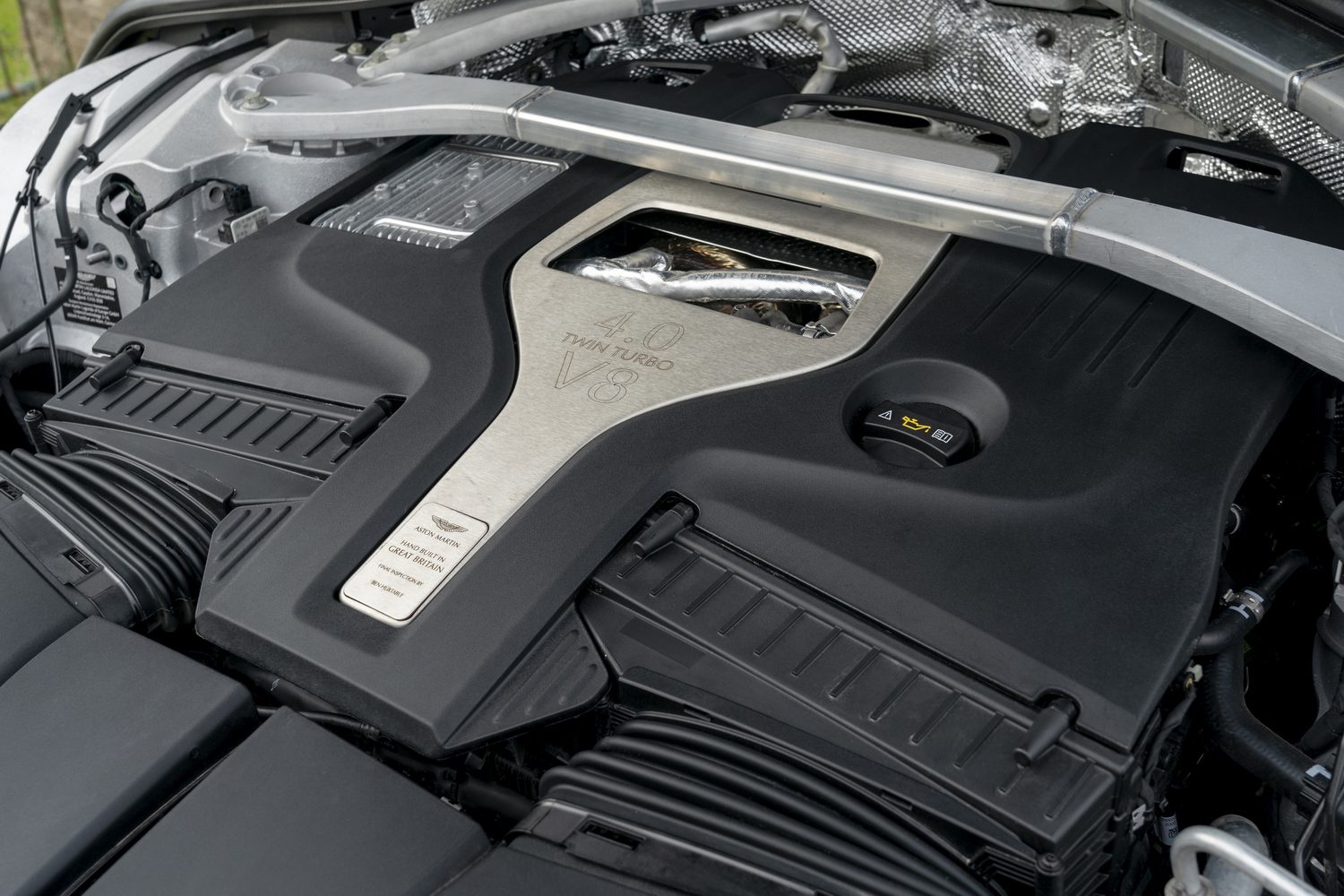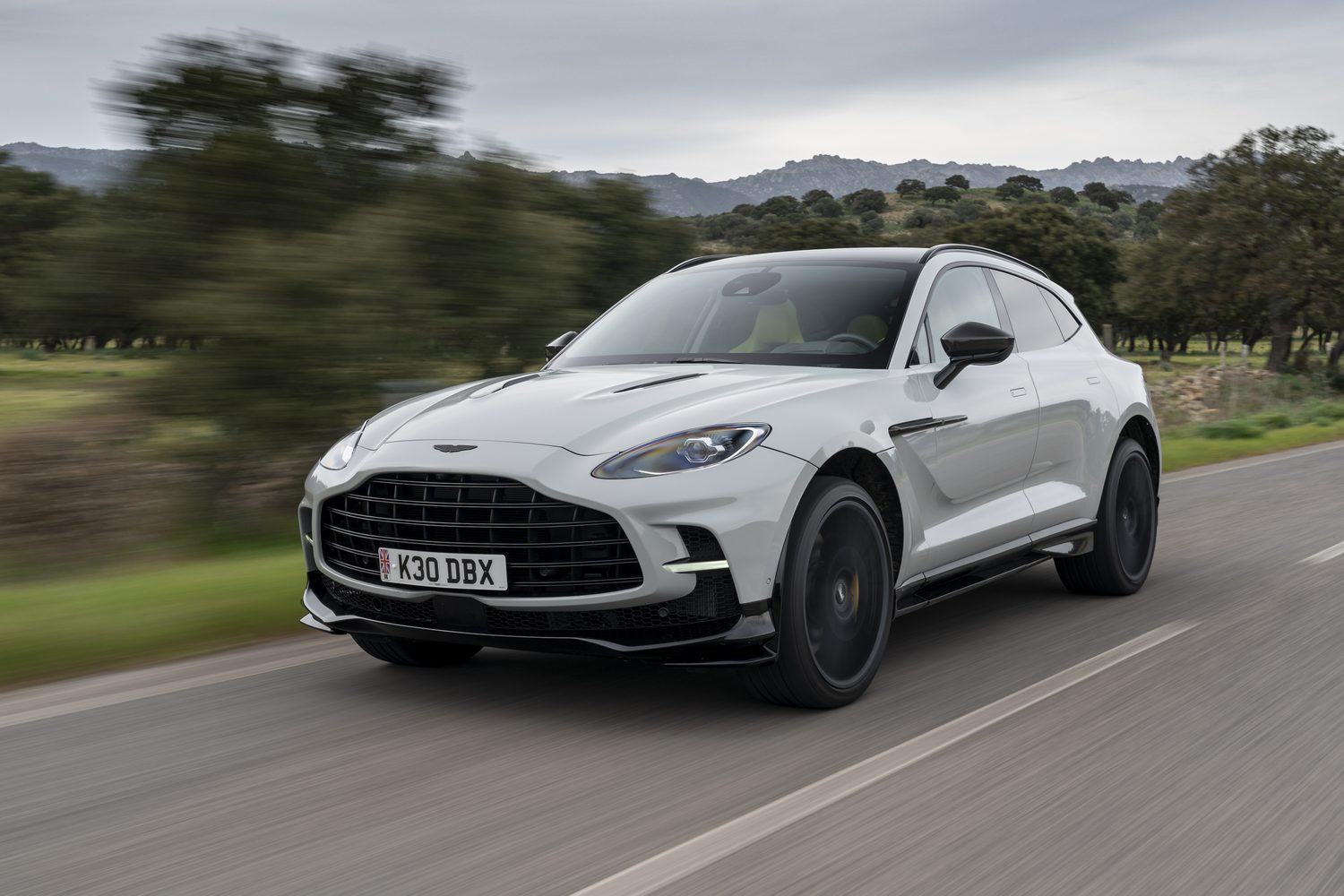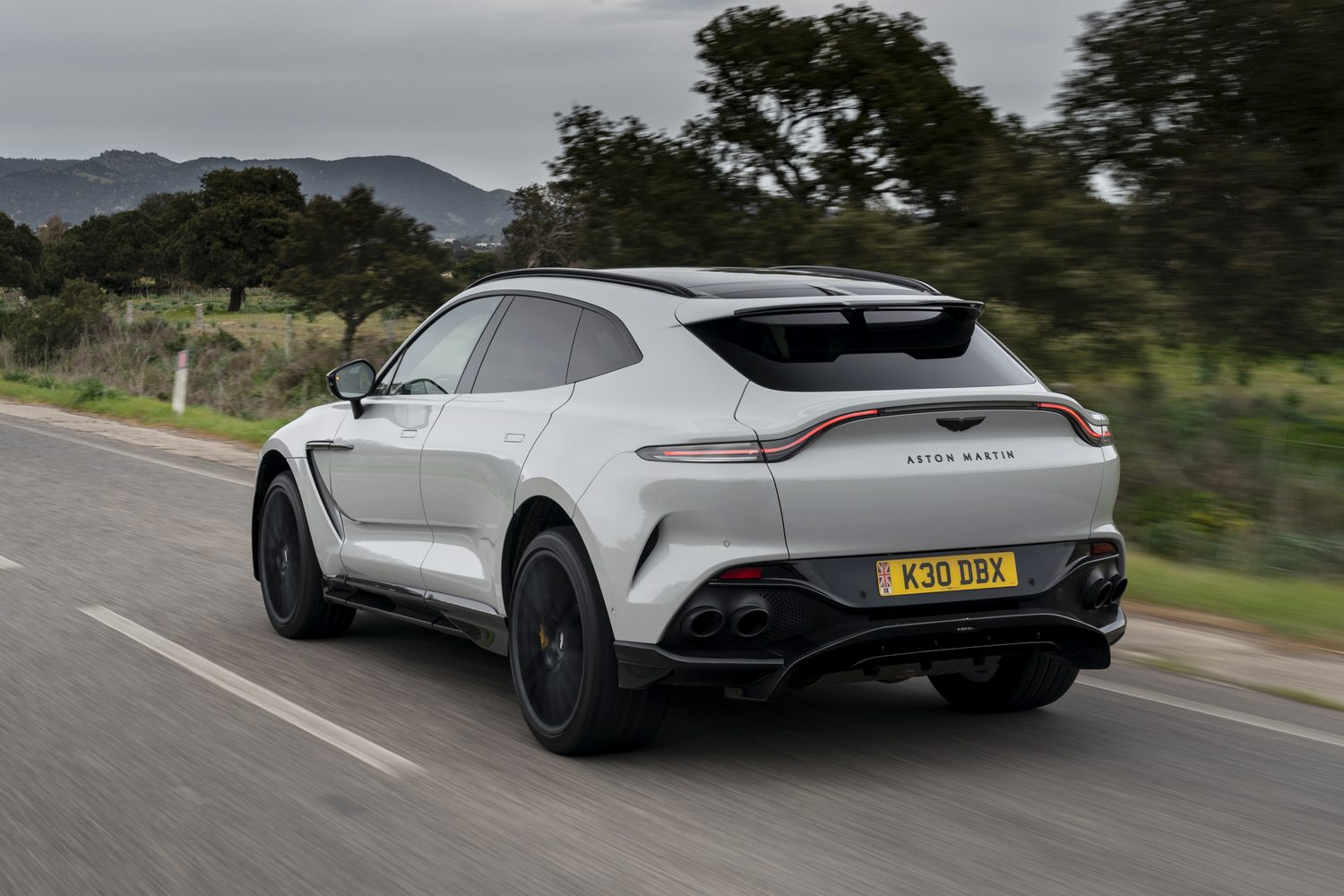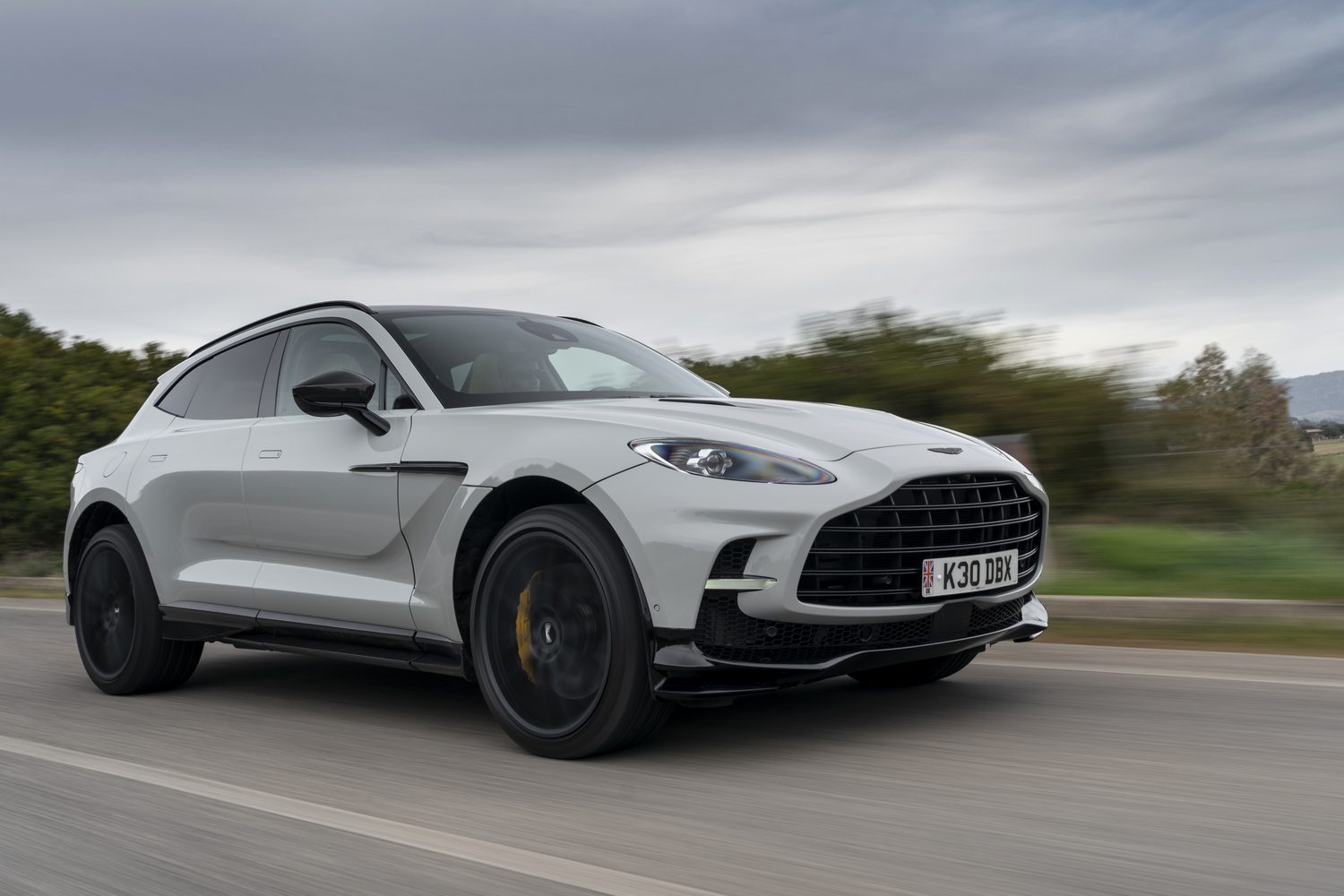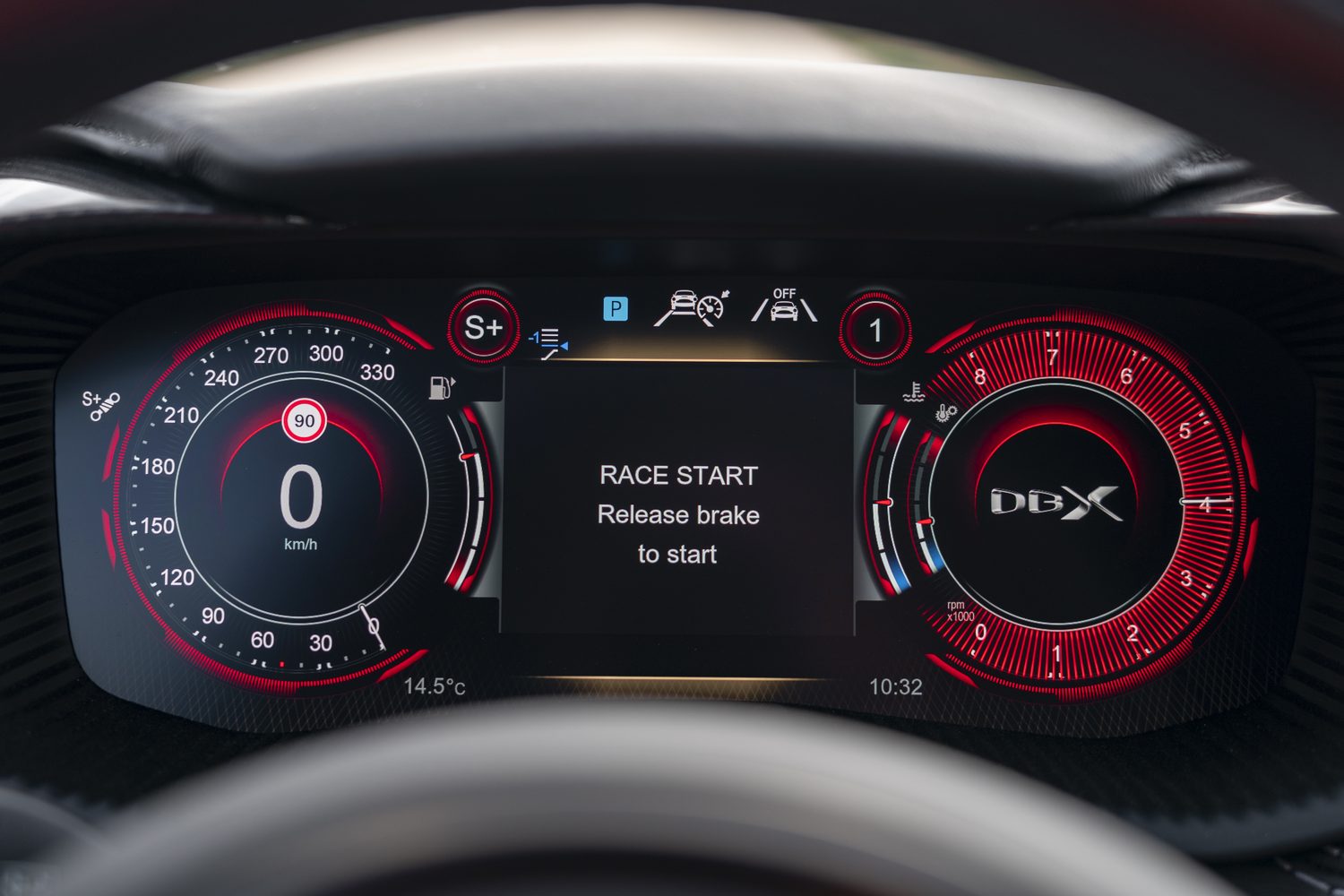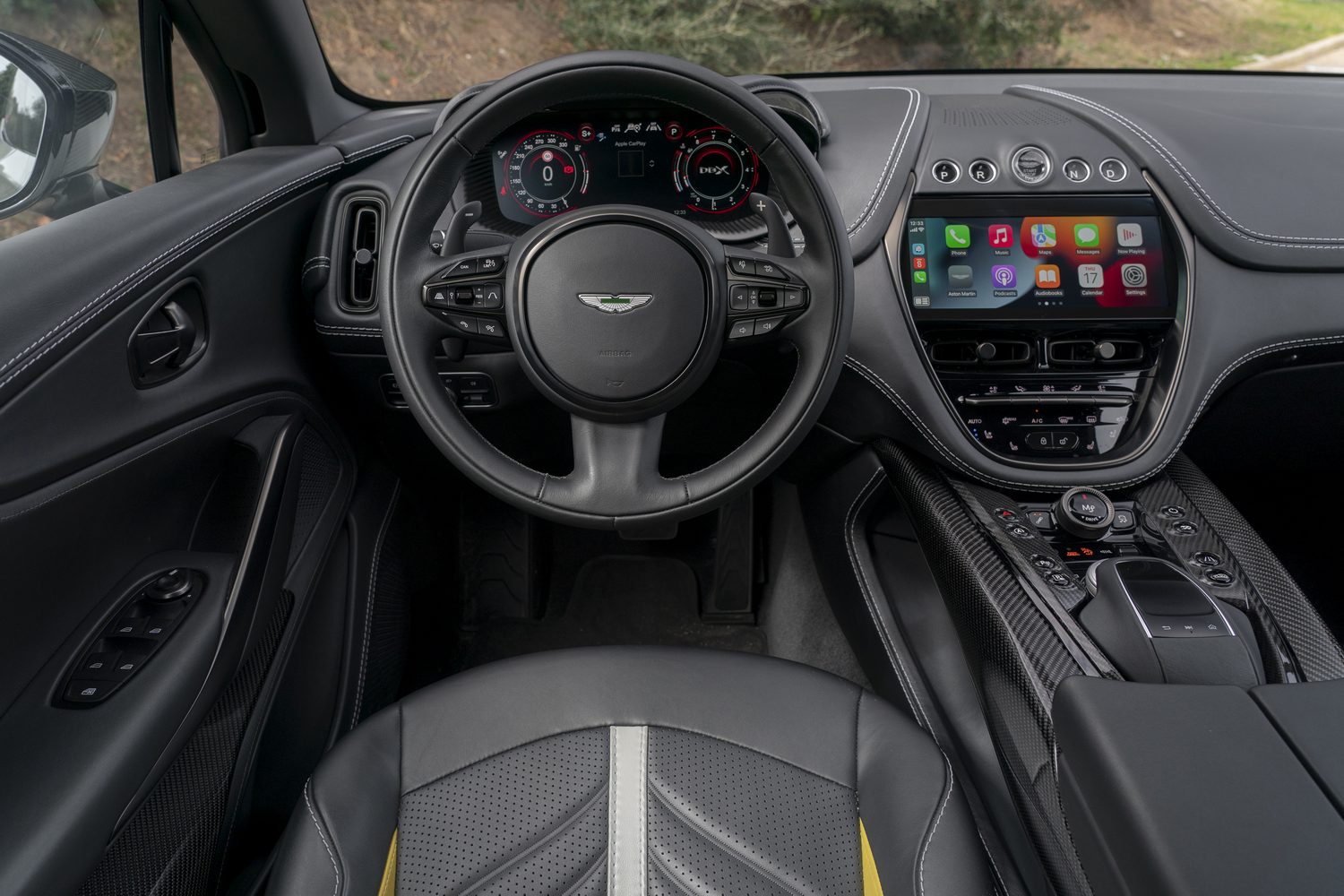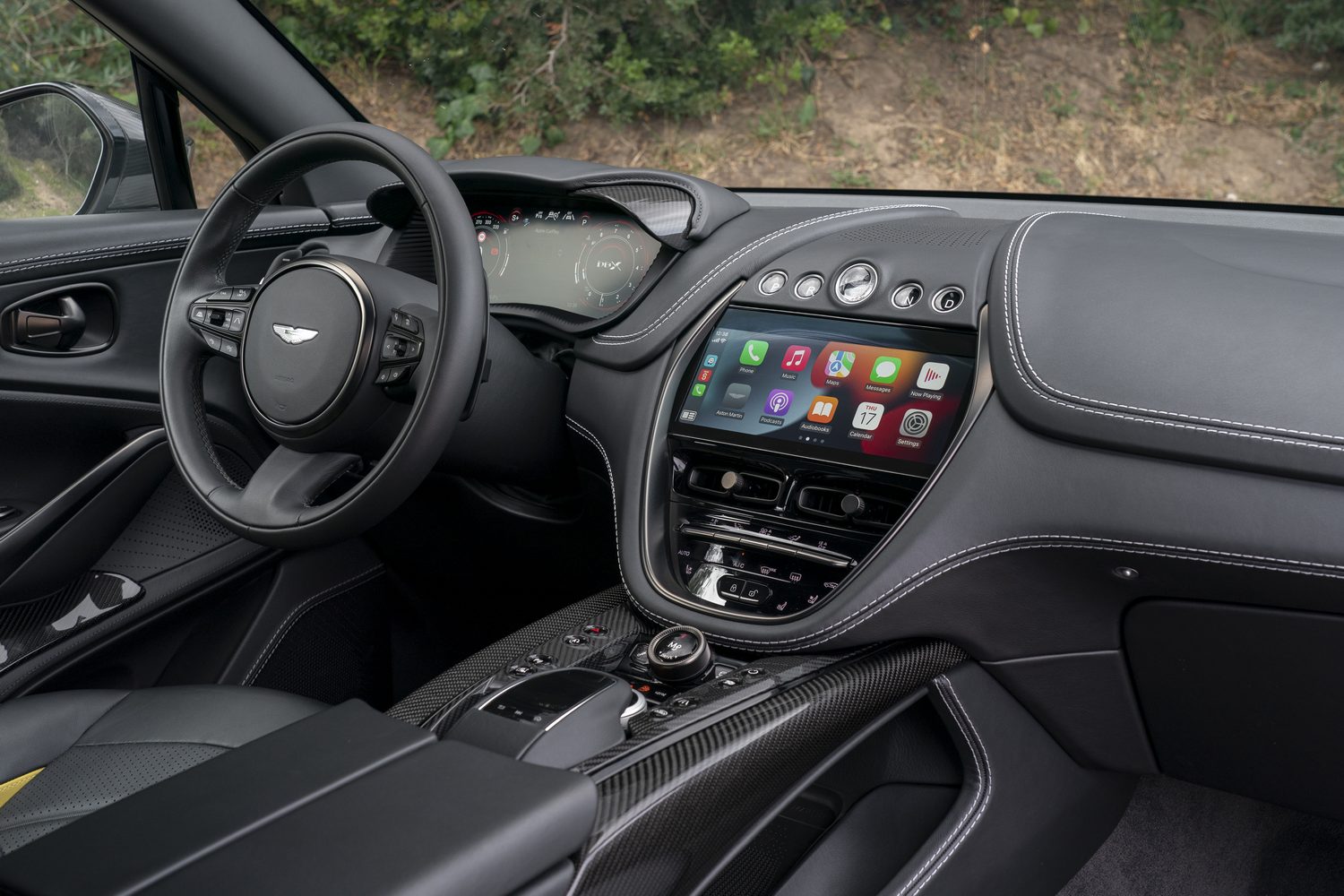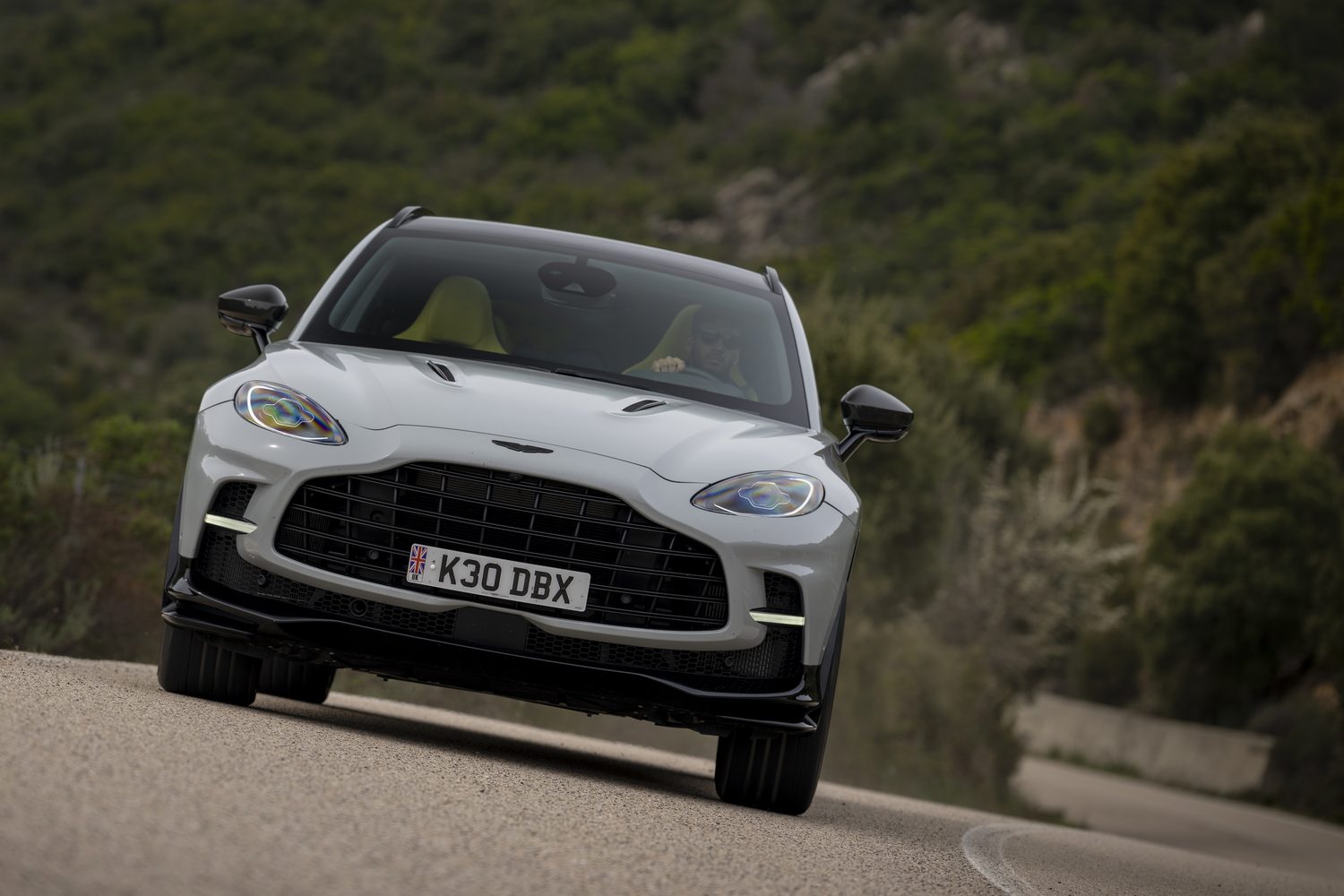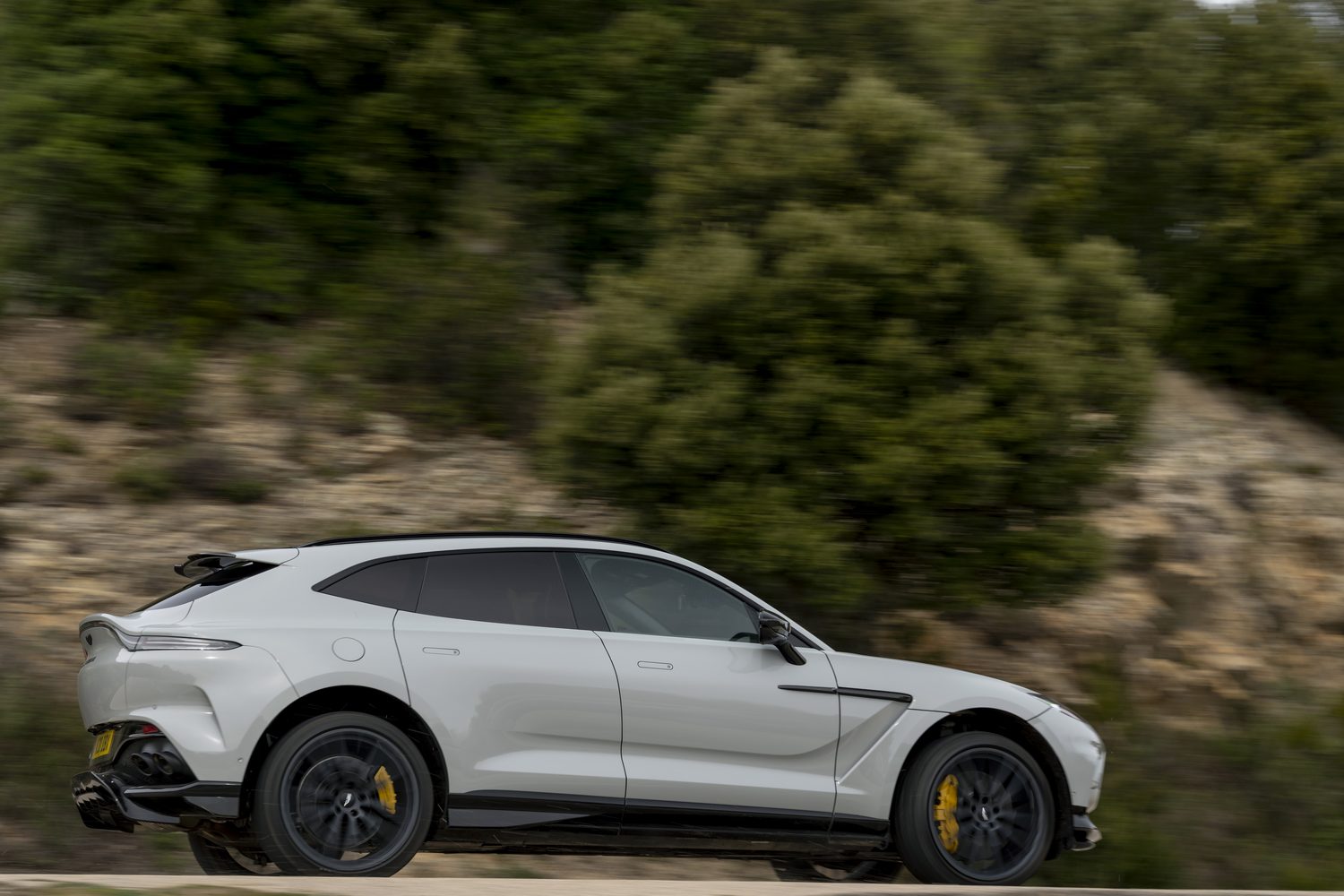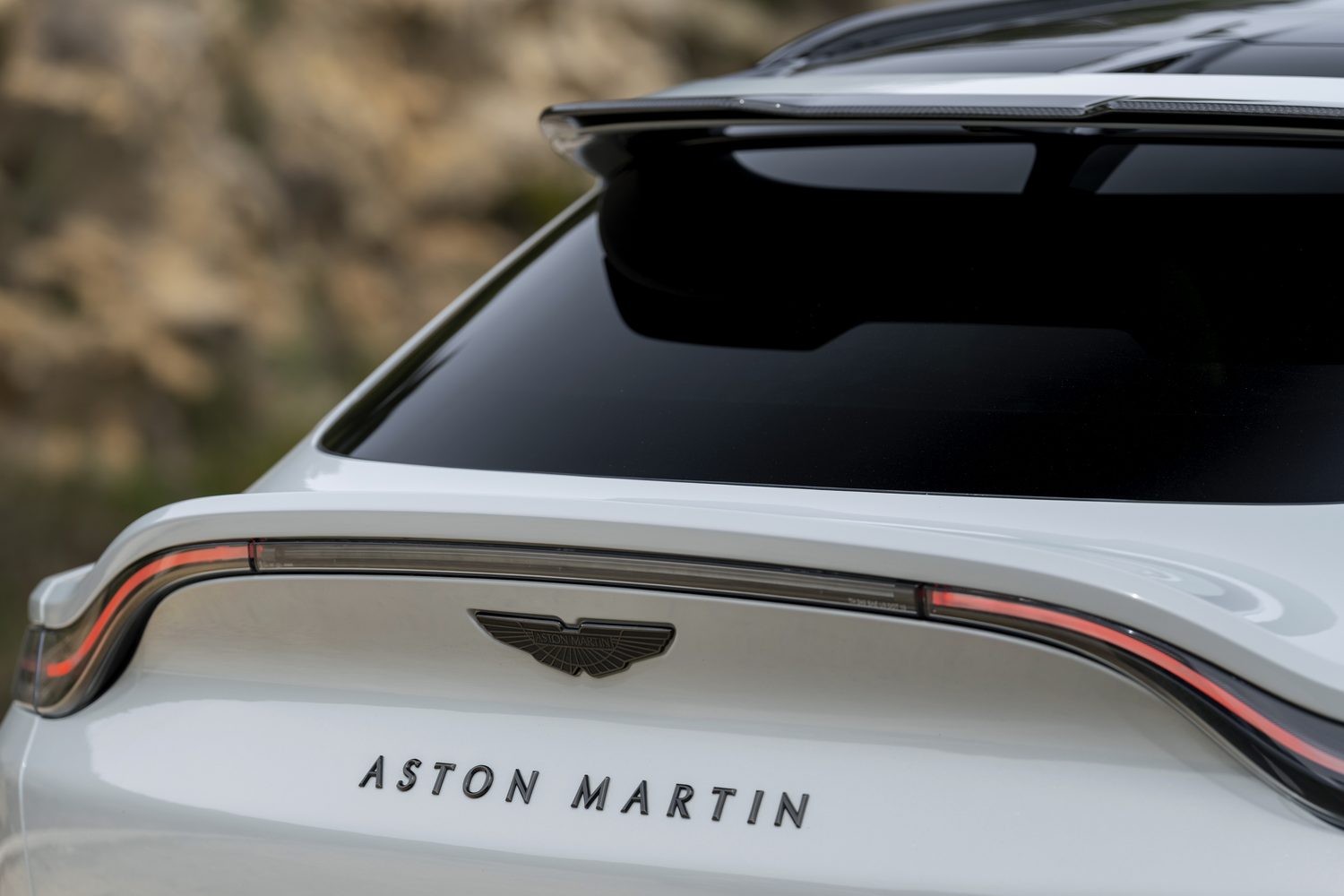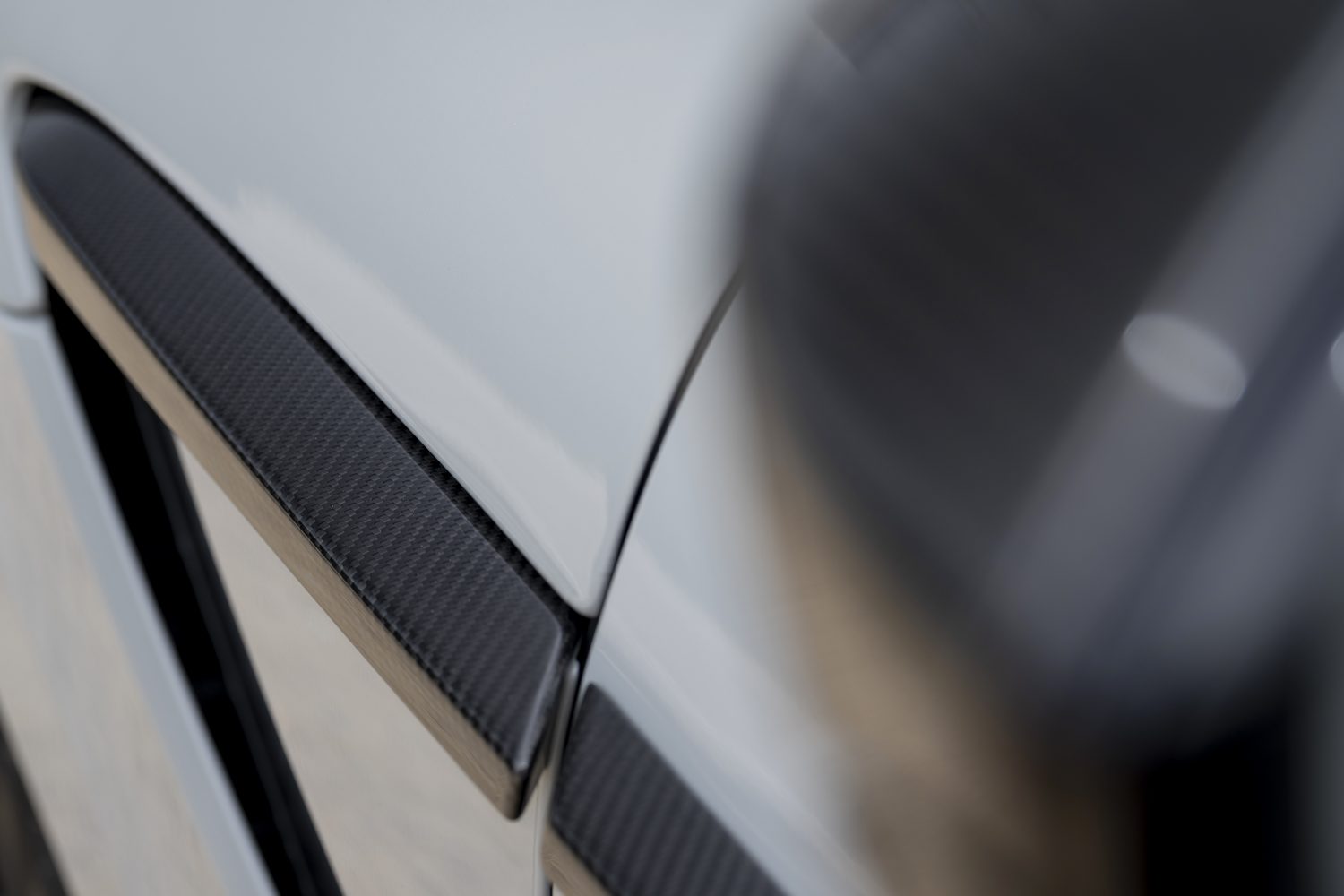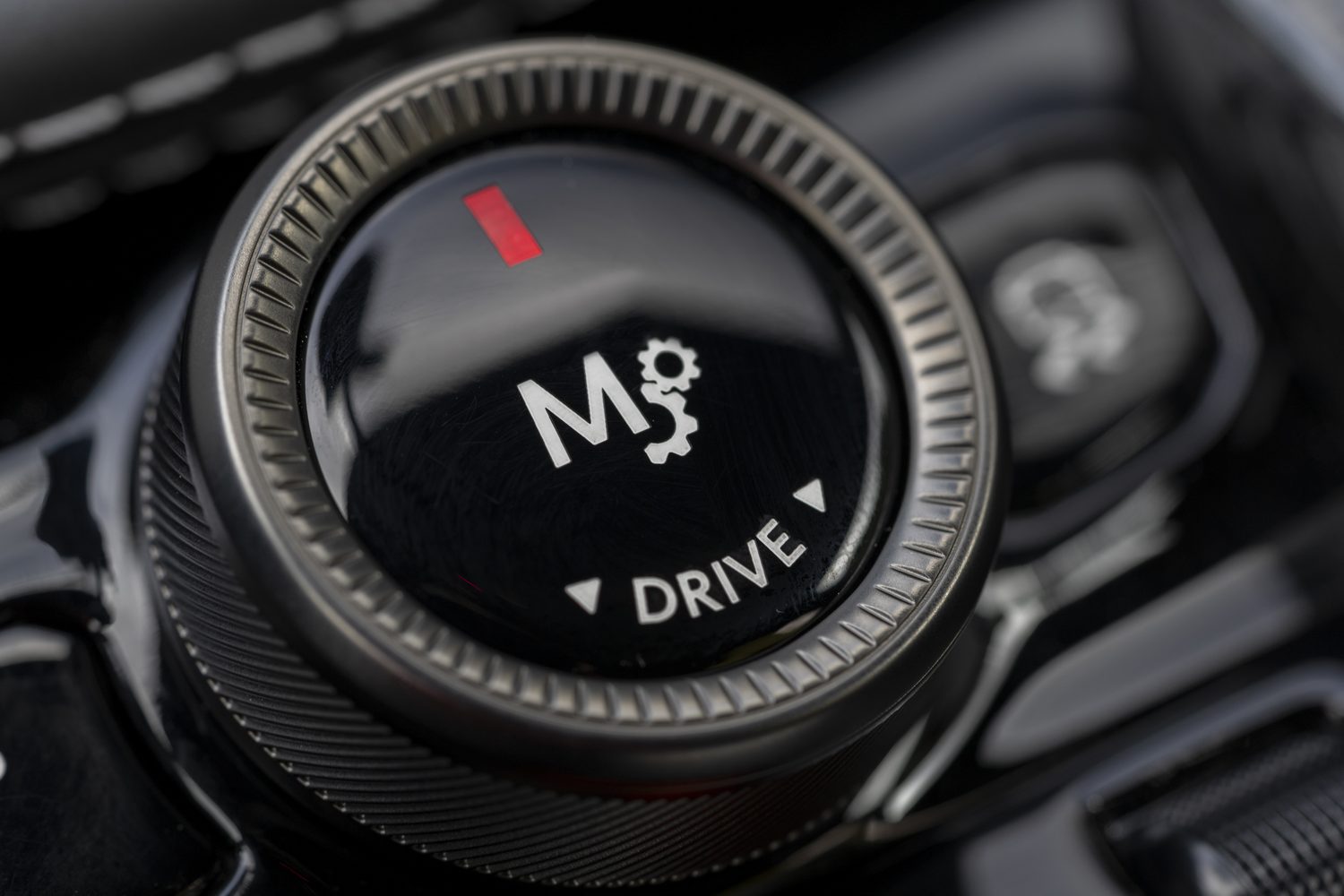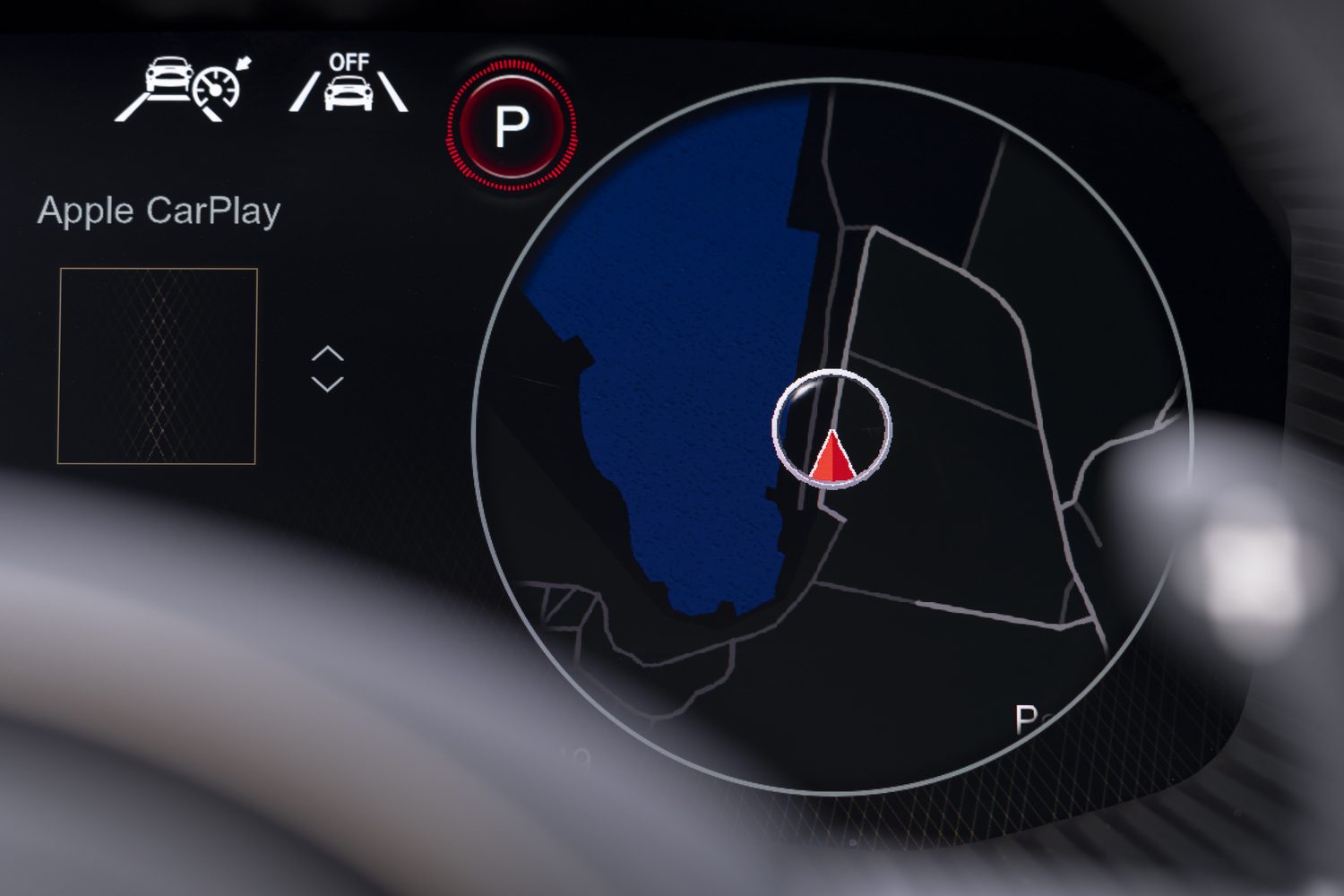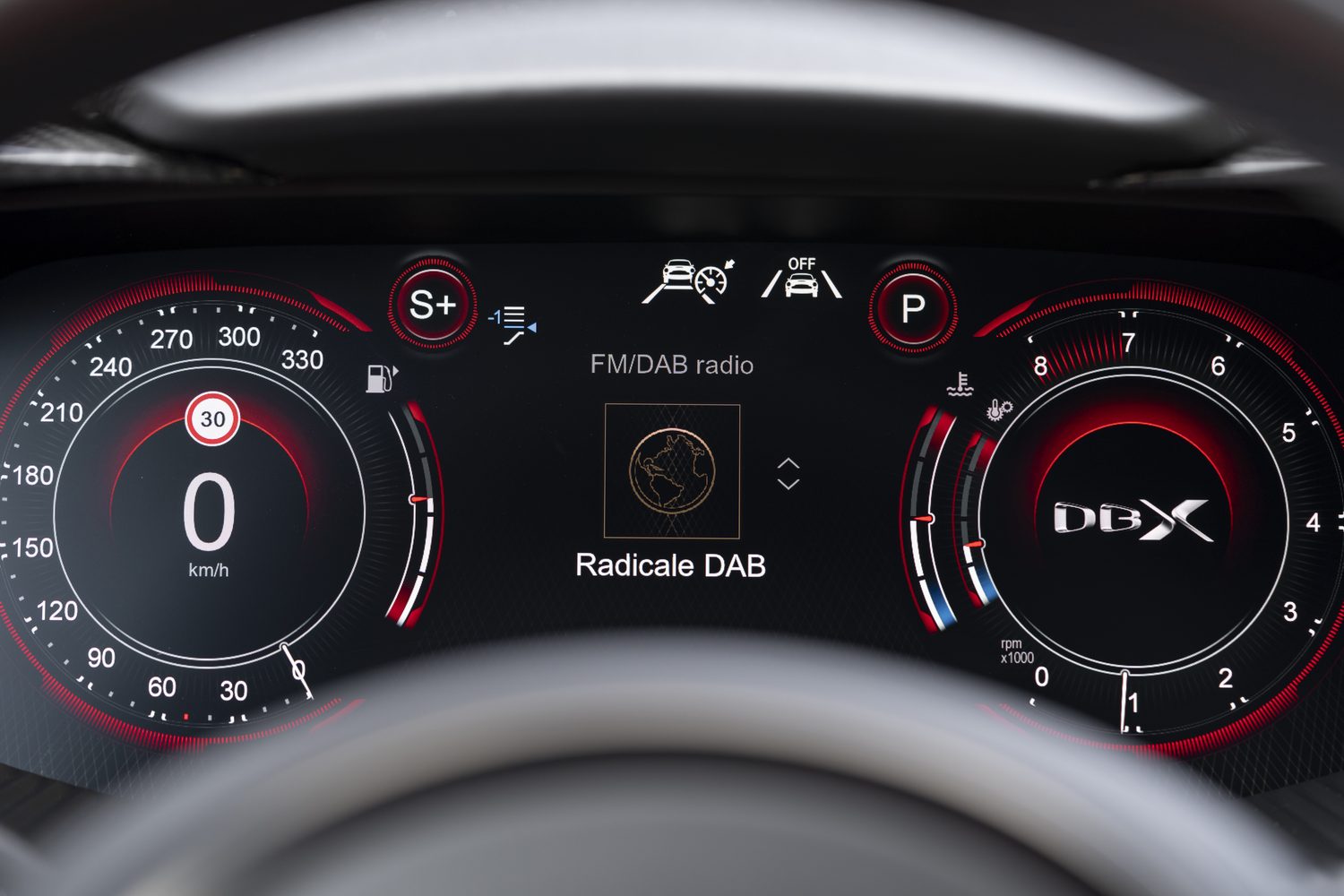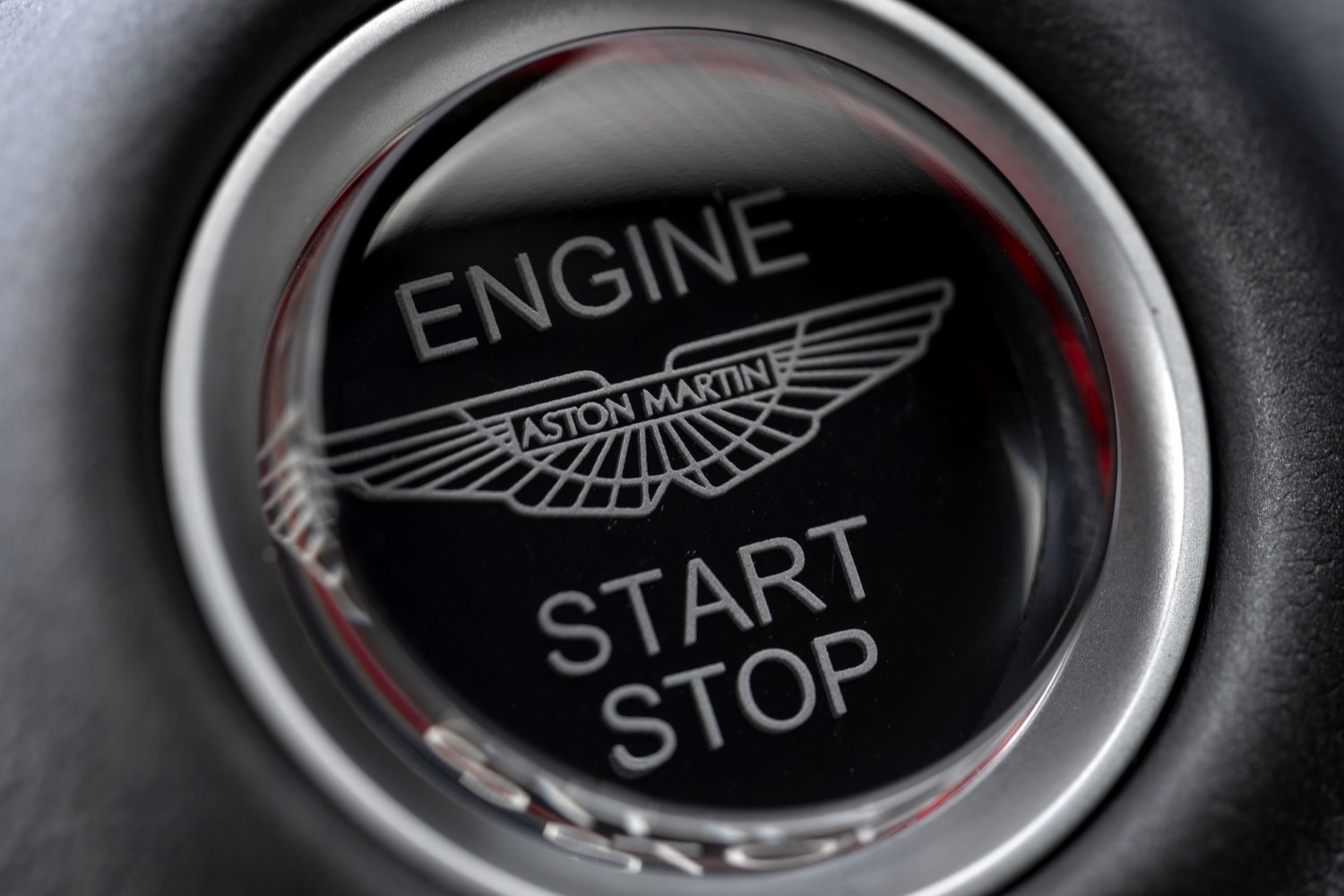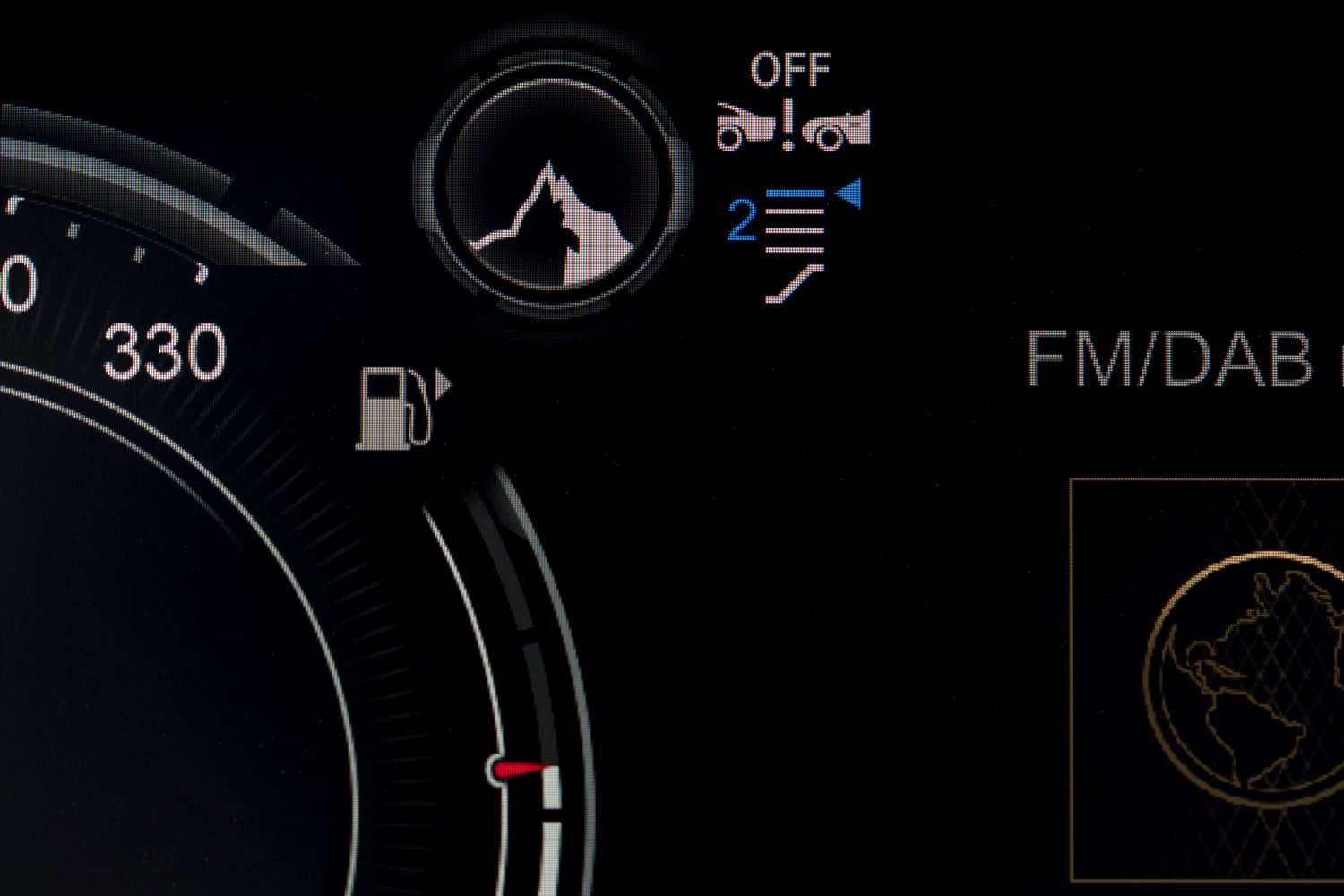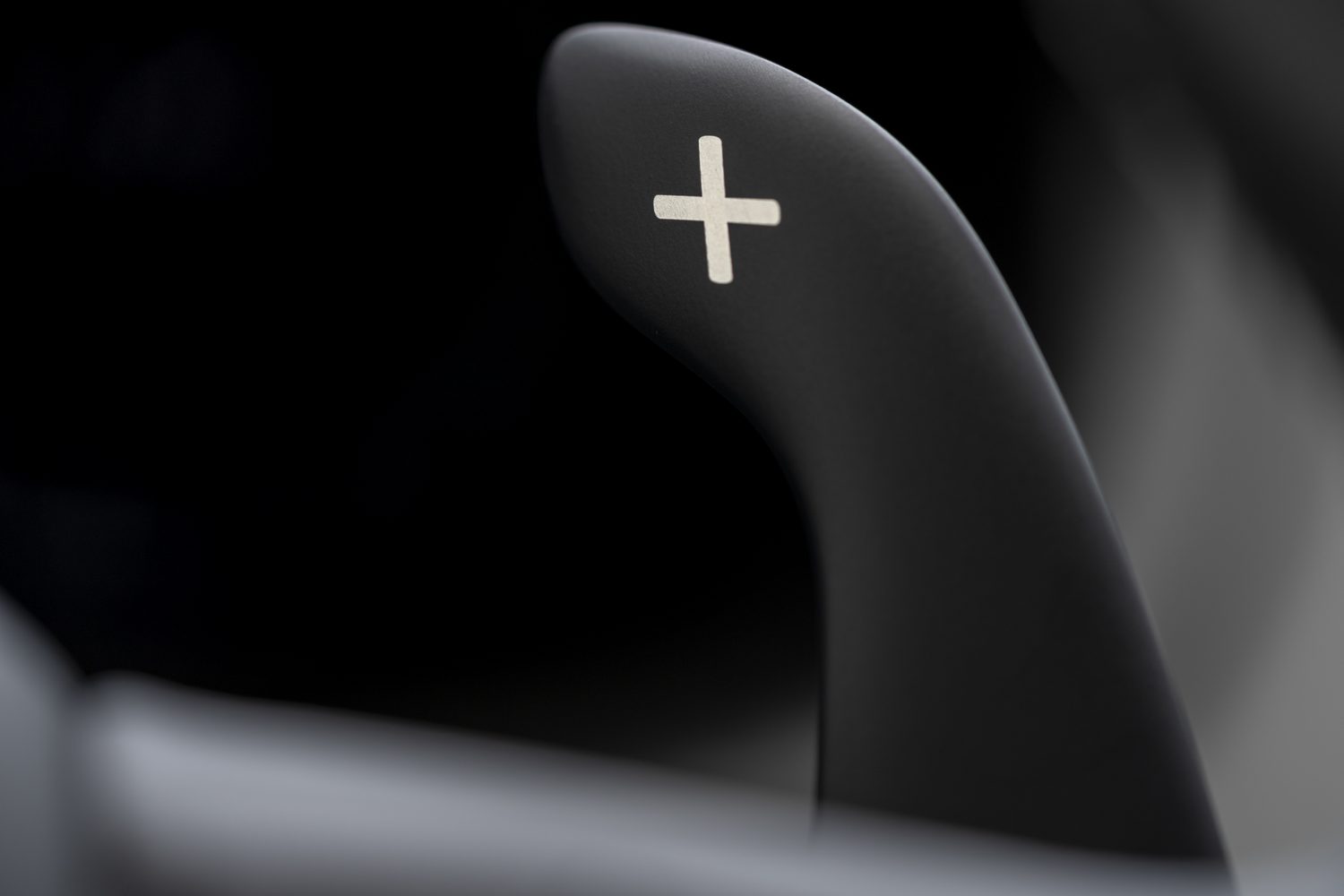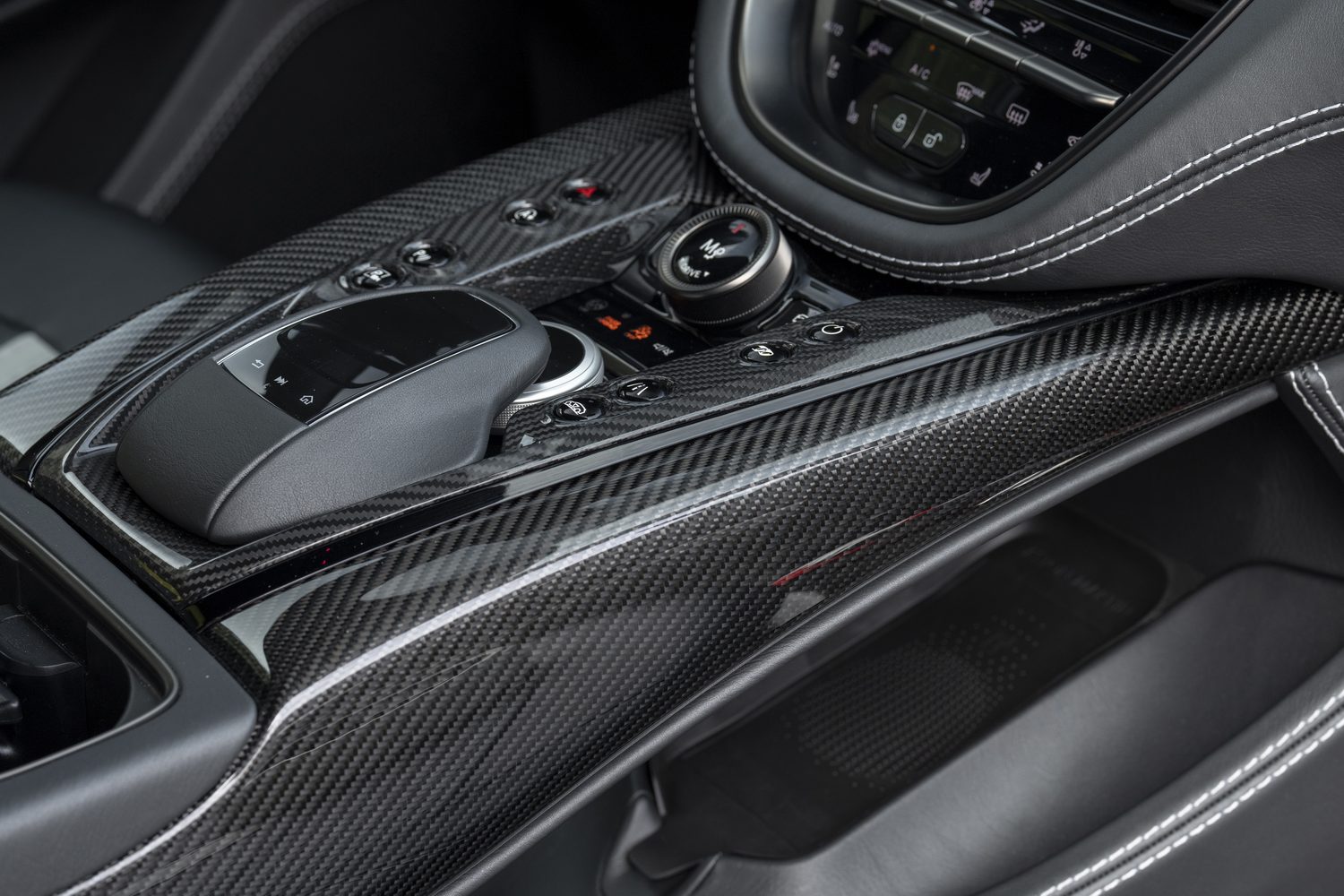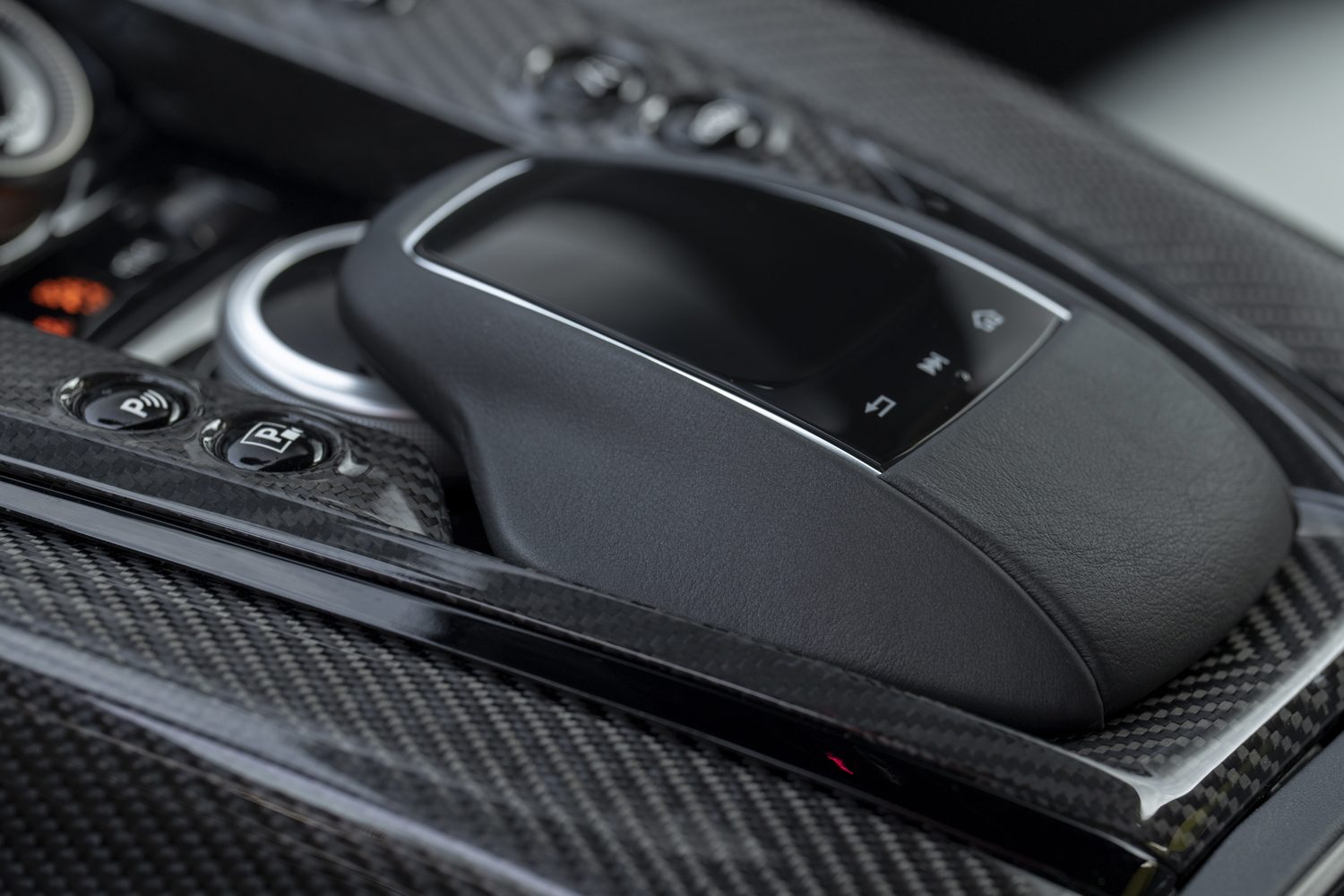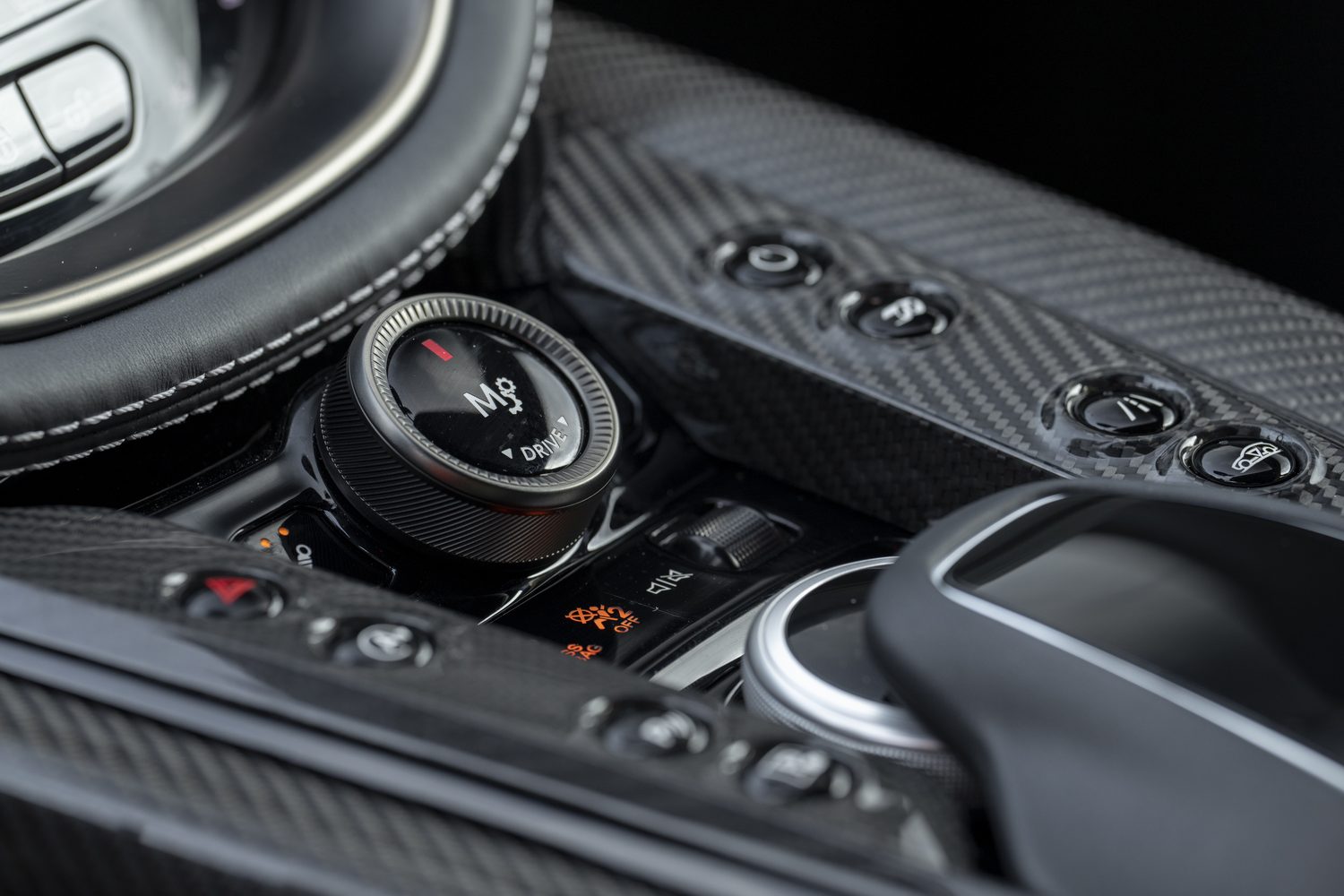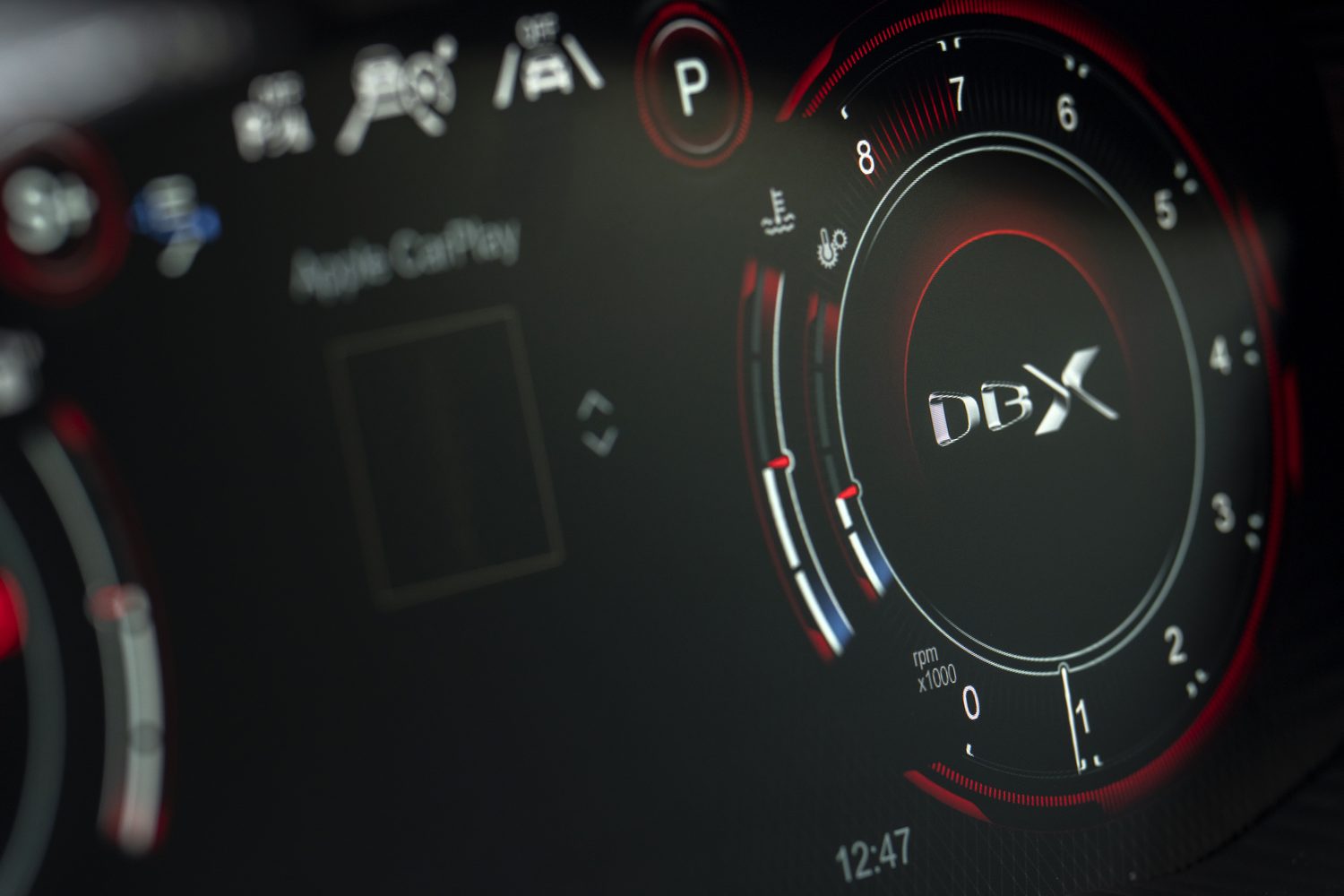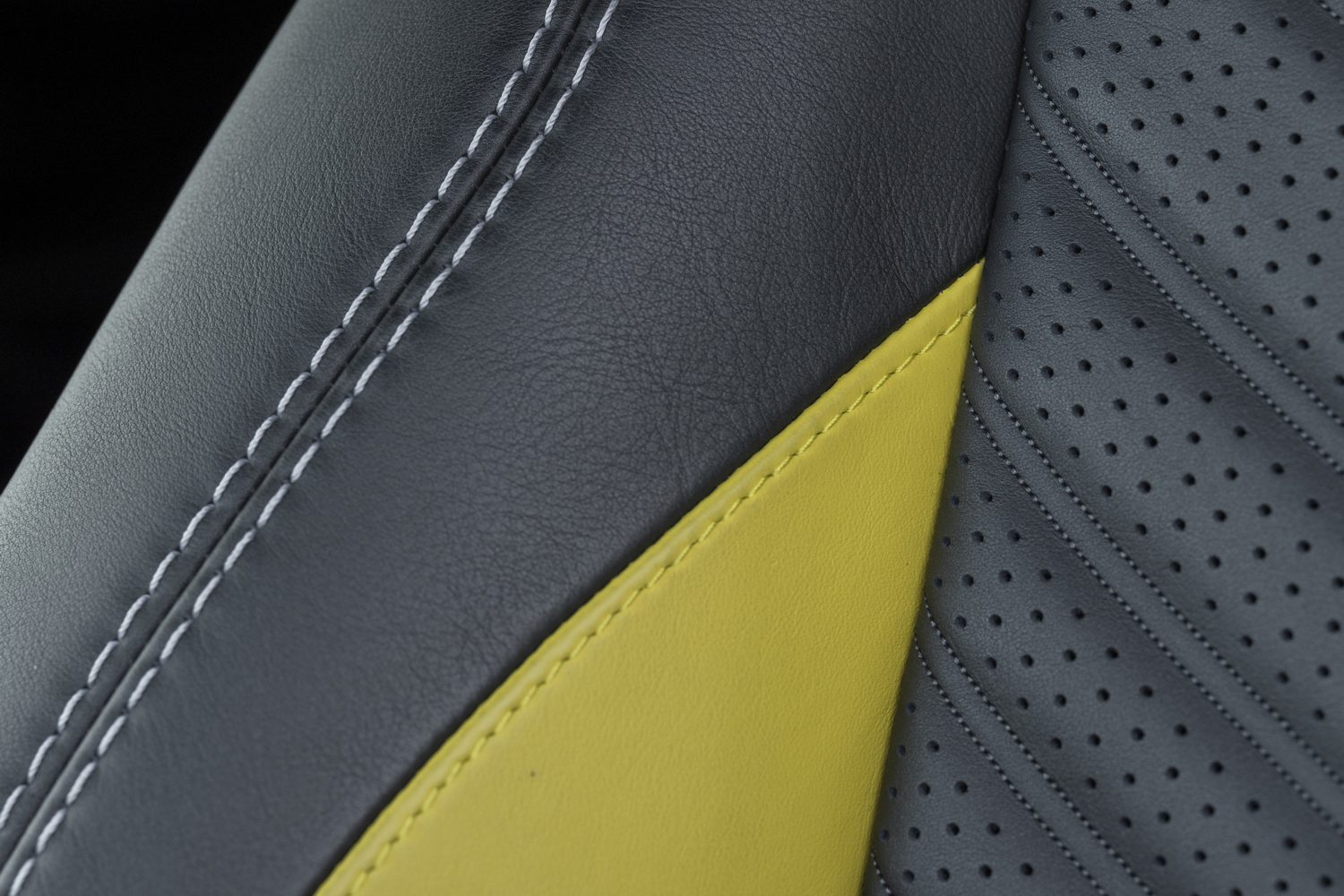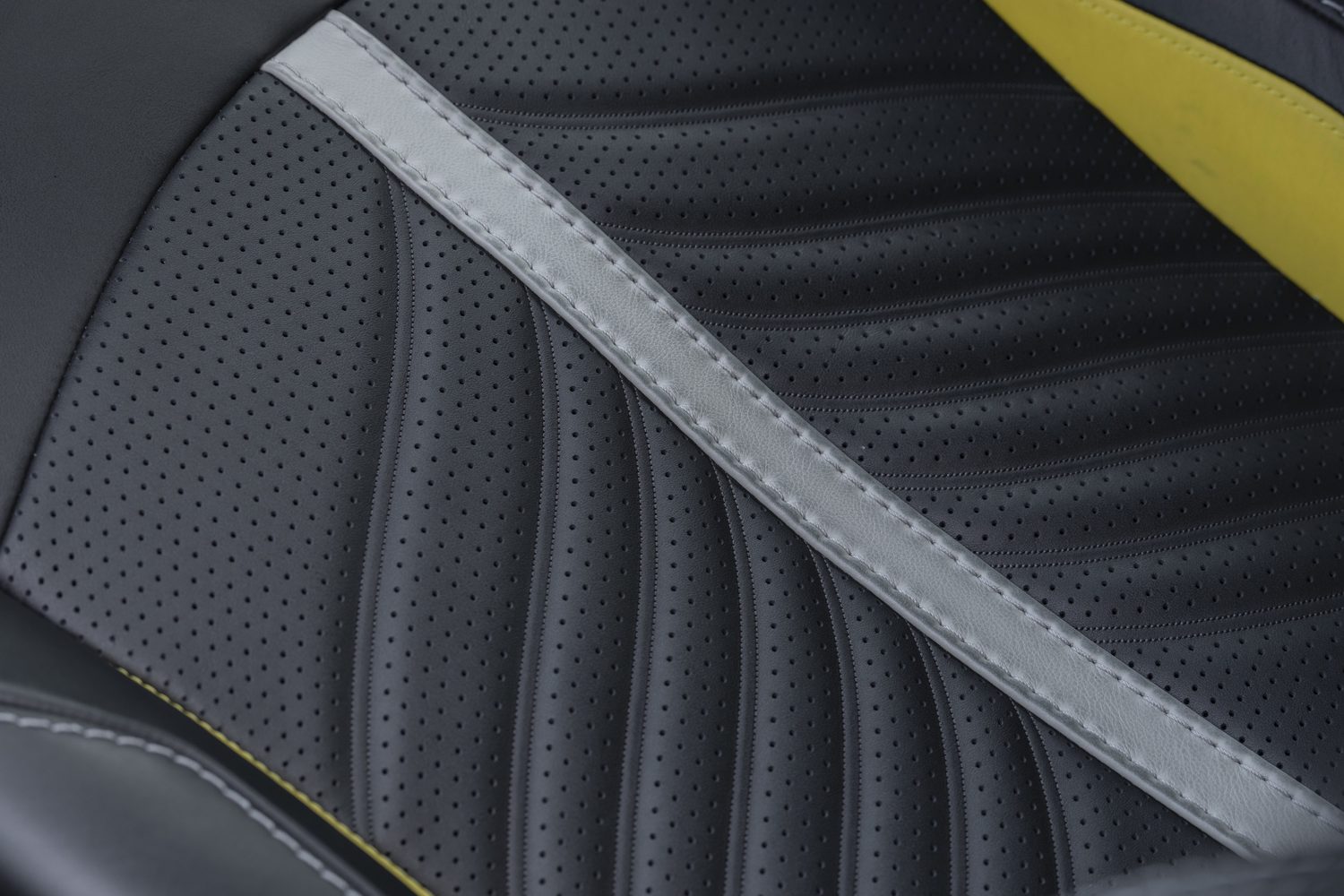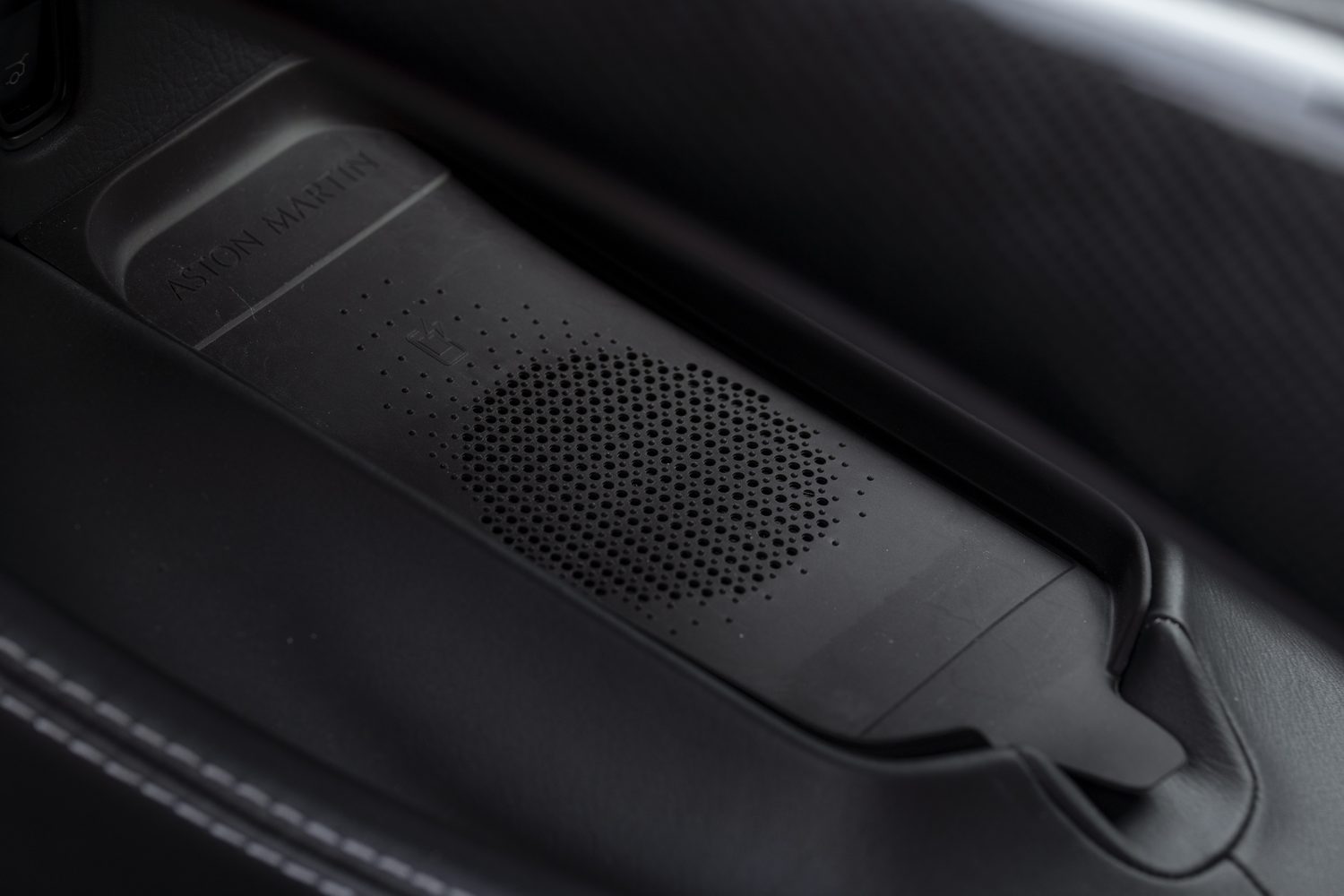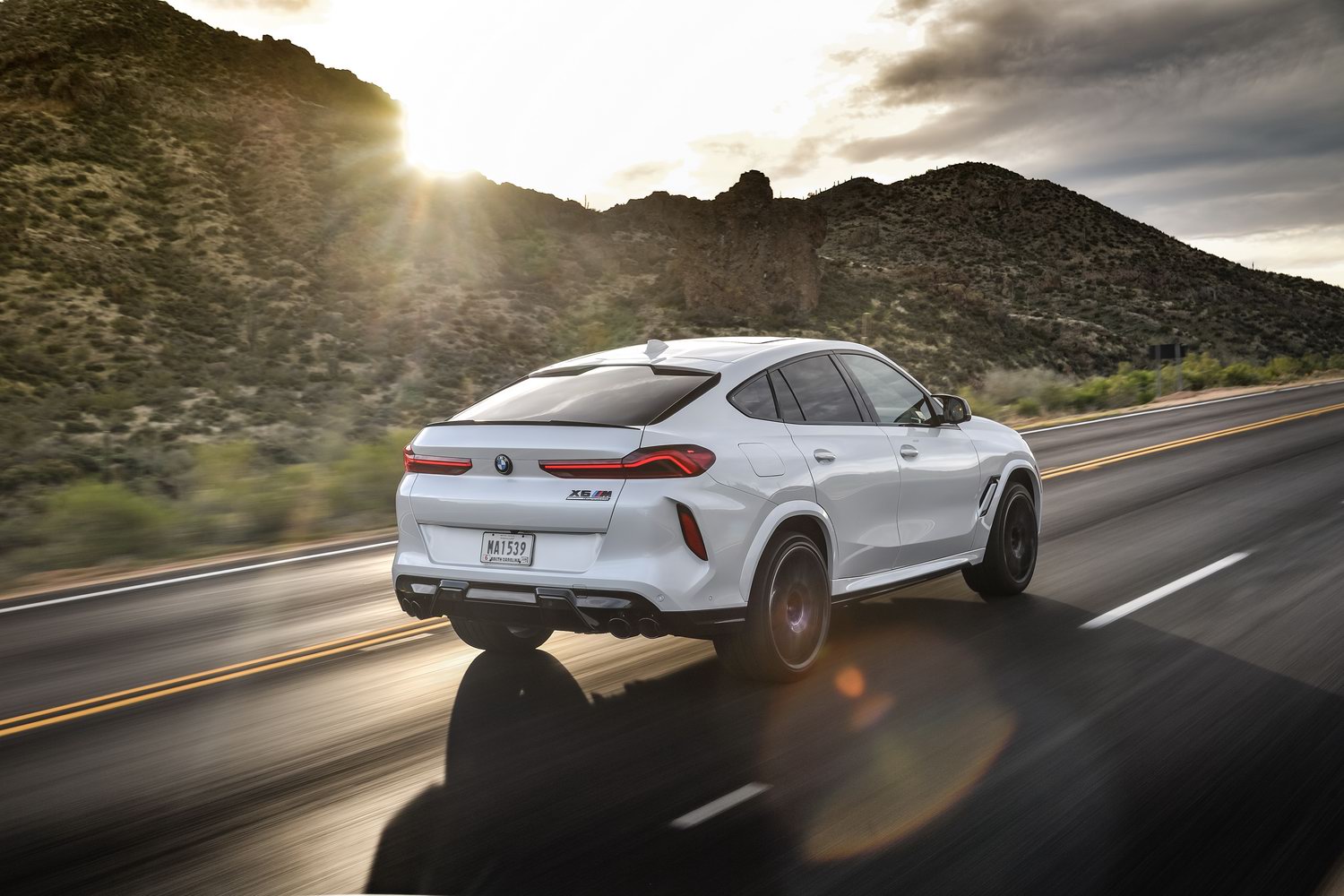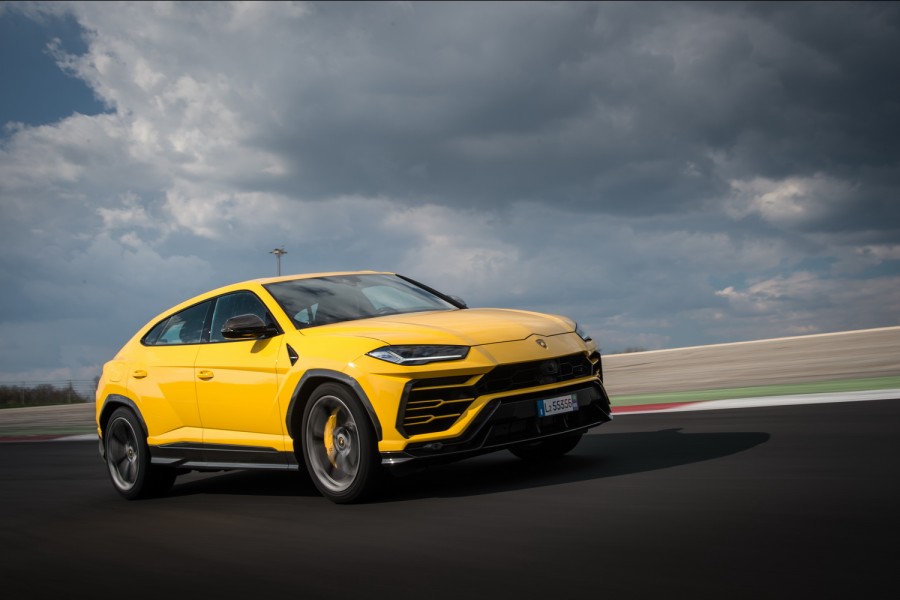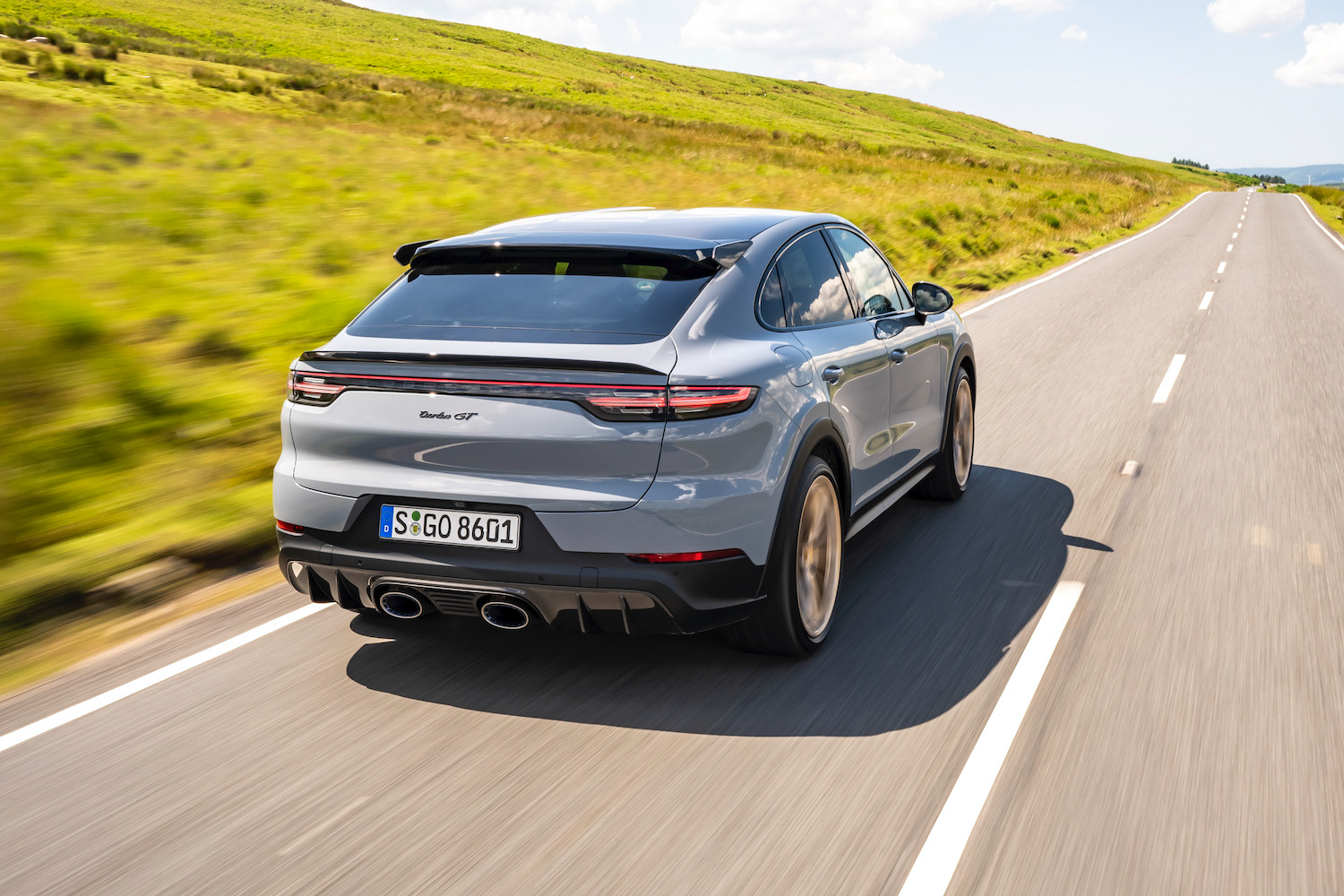With a 4.0-litre V8 and 550hp, the Aston Martin DBX was hardly a slouch. But now the resurgent British brand has given its luxury SUV even more sporting intent with the arrival of the new DBX707. The slightly awkward name has nothing to do with the Boeing 707 airliner and everything to do with an uprated V8 engine, which has been tuned to produce 707hp. That upgrade and a whole host of performance-related tweaks put the 707 at the head of the DBX range, but is the new model the best of the breed?
In the metal
From a purely aesthetic standpoint, the Aston Martin DBX is not universally loved. A slightly awkward rear and the way in which the trademark Aston grille has been grafted onto the front means it won't sit well with everyone. It isn't exactly ugly, but nor is it the prettiest car ever to grace the Aston Martin range.
For those who find the DBX a bit awkward, the new DBX707 is unlikely to curry much favour. Cooling has largely defined the DBX707's image, with Aston's team attempting to keep the enormous V8, the lightweight carbon-ceramic brakes and the nine-speed automatic gearbox from getting too hot. That meant opening up the front end to suck in (relatively) cold air, giving the 707 a grille that's 27 per cent larger than that of the standard DBX. But doing that, and channelling air to those 430mm carbon-ceramic brakes, creates drag.
As a result, the company had to compensate by smoothing the airflow over the body as much as possible, adding slots and vents to direct air around and under the car. The new side sills were part of that, as were the new diffuser and the new spoiler. And to deal with the immense amount of gas being kicked out by the AMG-derived V8 engine, the 707 gets some extra exhaust outlets.
Despite this fascination with air management, a cursory glance suggests Aston Martin has shied away from arguably the easiest aerodynamic win. The 707's ride height is unchanged. Or at least it is when you start the engine. Because the engineers wanted to keep the car's comfort and off-road capability intact, the ground clearance is no different to the standard car's, and in spite of the aggressive new diffuser and front bumper, the all-important approach and departure angles are also unchanged. Only in Sport or Sport Plus modes will the 707 hunker down, the tuned air suspension dropping 5mm lower than in the standard DBX.
From the driving seat, the 707 looks much the same as a more conventional DBX, with the same basic dashboard layout, a digital instrument display and a central infotainment screen. As with the standard car, that's controlled by a rotary dial on the centre console, while the engine start and gear selector buttons are still found above the screen. The seats, however, have changed slightly, becoming more supportive and more heavily sculpted to help you enjoy the car's increased dynamic capability.
And that isn't all that's changed, thanks to the arrival of a 707-specific drive mode selector, which is now flanked by a range of buttons that allow more precise tuning of the 707's character. If you want the sportier suspension settings without the aggression of Sport Plus mode, that's there for you. Similarly, there's a button to change the exhaust setting and tweak the engine note. Down near that drive mode selection switch, owners of a standard DBX might spot the new cupholders, but they are being rolled out across the Aston SUV range in light of customer feedback.
Keeping the DBX interior mostly unchanged has also meant the DBX is just as practical as before, with the same huge 638-litre boot - with more space underneath. It's spacious inside, too, with plenty of headroom for those in the front and lots of adjustment in those sportier front seats. The driving position is excellent, and there's enough elbow room to ensure you don't feel too cosy when there's someone sitting next to you. In the back, the space is even more impressive, with bags of legroom and even relatively generous headroom. Sitting four tall adults isn't going to be an issue whatsoever. Kids, (if you'll let them anywhere near that lovely leather upholstery) will be spoilt for space.
Driving it
For all the aesthetic changes, the real differences between the conventional V8 DBX and this 707 model are found under the skin. Perhaps the most important factor is the uprated 4.0-litre V8 engine, which is still sourced from Mercedes-AMG, but now comes with a few Aston Martin-specific tweaks. Chief among these is the introduction of new turbocharger technology, which helps improve responsiveness and power output. The changes add up to a 157hp increase in power and a 200Nm uplift in torque. Or, to put it another way, that's like adding the power of a 1.5-litre Skoda Octavia.
As before, that goes to all four wheels via a nine-speed automatic gearbox, but Aston Martin has tweaked the all-wheel-drive system logic so the car is "more front-biased when you need it and more rear-biased when you want it". In essence, the front wheels can transmit a maximum of 50 per cent of the torque to the road, although in extreme situations it's possible to have slightly more front bias. It also has a new clutch, allowing you to change gear a claimed 40 per cent faster.
Combine that with the all-wheel-drive system, launch control and the custom-made Pirelli P Zero tyres, and the 707 can make full use of the V8's might. A full-bore standing start will take this two-and-a-quarter-tonne car from 0-100km/h in 3.3 seconds. After 7.4 seconds it'll be touching 200km/h, and it'll keep going until it's covering an enormous 310km/h. And Aston Martin's engineers reckon those acceleration figures are a little bit pessimistic - they've done it even faster than that. In short, this is an SUV with supercar pace, and it'll happily out-accelerate the Lamborghini Urus or a BMW X6 M Competition.
It sounds good doing it, too. The V8 engine snarls its way through the rev range, popping its way through gear changes and roaring with intent when it kicks down. The exhaust note doesn't have the same depth and soul as that of the Urus, but it makes up for that by being quiet and refined in the more sedate GT mode, allowing you to drive in relative peace when you so wish. Aston Martin clearly hasn't forgotten its GT car roots with the 707, and the newcomer only raises its voice when you ask it to.
The same goes for the ride and handling, both of which are beautifully judged. The DBX707 might be stiffer than its predecessor, but in a bid to retain the long-distance capability the car still feels composed and stable even on relatively rough surfaces. Although it doesn't soak up the bumps quite as beautifully as a similarly priced luxury saloon might, the air suspension does a commendable job of ironing out the potholes, and it's certainly more comfortable than a Urus or an X6 M.
And that comfort doesn't really suffer when you opt for a more aggressive suspension mode. Sure, things firm up slightly, but in general terms it's still relatively smooth. It's an intentional ploy from Aston Martin, which says it wanted to retain that comfort and use the firmer settings simply to improve body control and steering response when the driver demands it. It's a refreshing approach compared with those who simply stiffen the suspension to make the car feel more aggressive.
But although the DBX707 feels softer than its rivals, it's still incredibly agile. The front-end grip is plentiful and the whole car darts into corners almost instantly, while the rear-biased all-wheel-drive system makes it easy to adjust using the throttle. Because the suspension isn't as stiff as that of the Urus, there is a bit more body roll in corners, but it's all incredibly well controlled and it serves as a warning that the limit is approaching.
When the car does cross the line, it does so predictably and almost gently. Consistent levels of weight and feedback through the pedals help too, making it easy to correct any misbehaviour. That said, finding the limit on a public road (or at least a dry, uncontaminated one) will probably only be done deliberately. The grip levels are immense, and going quickly enough to upset the 707 will almost certainly be illegal, or at least highly inadvisable.
In short, the DBX707 not only goes like a sports car, but it handles like one too. Yet it can still do all the conventional 4x4 stuff. The car can be specified with an integrated folding towbar, which allows it to pull trailers weighing up to 2.7 tonnes, and it'll wade through 50cm of water. That kind of capability won't concern the latest Land Rover Defender, but you try doing that in an Alfa Romeo Stelvio Quadrifoglio. Of course, most customers won't do anything that taxing, but it's good to know you're covered if you come across a rutted track or a flurry of snow.
What you get for your money
Aston Martin still doesn't have an official presence in the Republic of Ireland, so anyone who wants a DBX707 will probably be importing it from Charles Hurst in Belfast. There, the right-hand-drive SUV comes with a relatively generous kit list, but it also has a pretty hefty price tag. At £189,000 before you so much as look at the options list, it's not what you'd call cheap, and that's before you look at import taxes of course.
You do at least get plenty in exchange. There's all the usual stuff - navigation, leather and Alcantara trim and Apple CarPlay - but the DBX707 also comes with soft-close doors, a premium audio system and heated seats in the front and rear. There's lots of safety tech, too, including lane departure warning, blind-spot monitoring and adaptive cruise control that can detect a vehicle in front and maintain a safe distance behind it.
Summary
While the DBX707 looks, sounds and feels like a high-performance version of the standard DBX, it's no one-trick pony. The upgrades simply add to the breadth of capability, allowing the Aston Martin SUV to morph from comfy, all-purpose luxury 4x4 to fire-breathing sports car when the mood takes you. If merging those capabilities is an art form, the DBX707 is a masterpiece. Not only is it the best version of the DBX, but it's one of the best high-performance luxury SUVs on the market.

